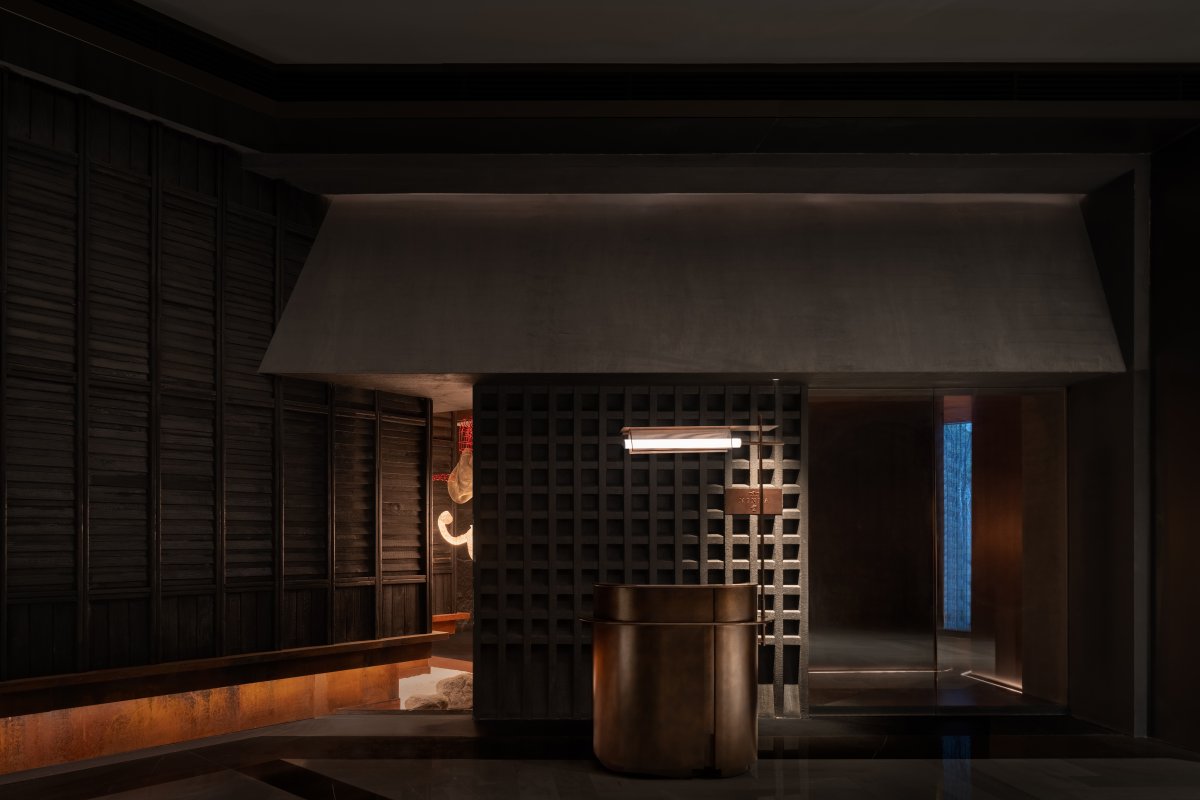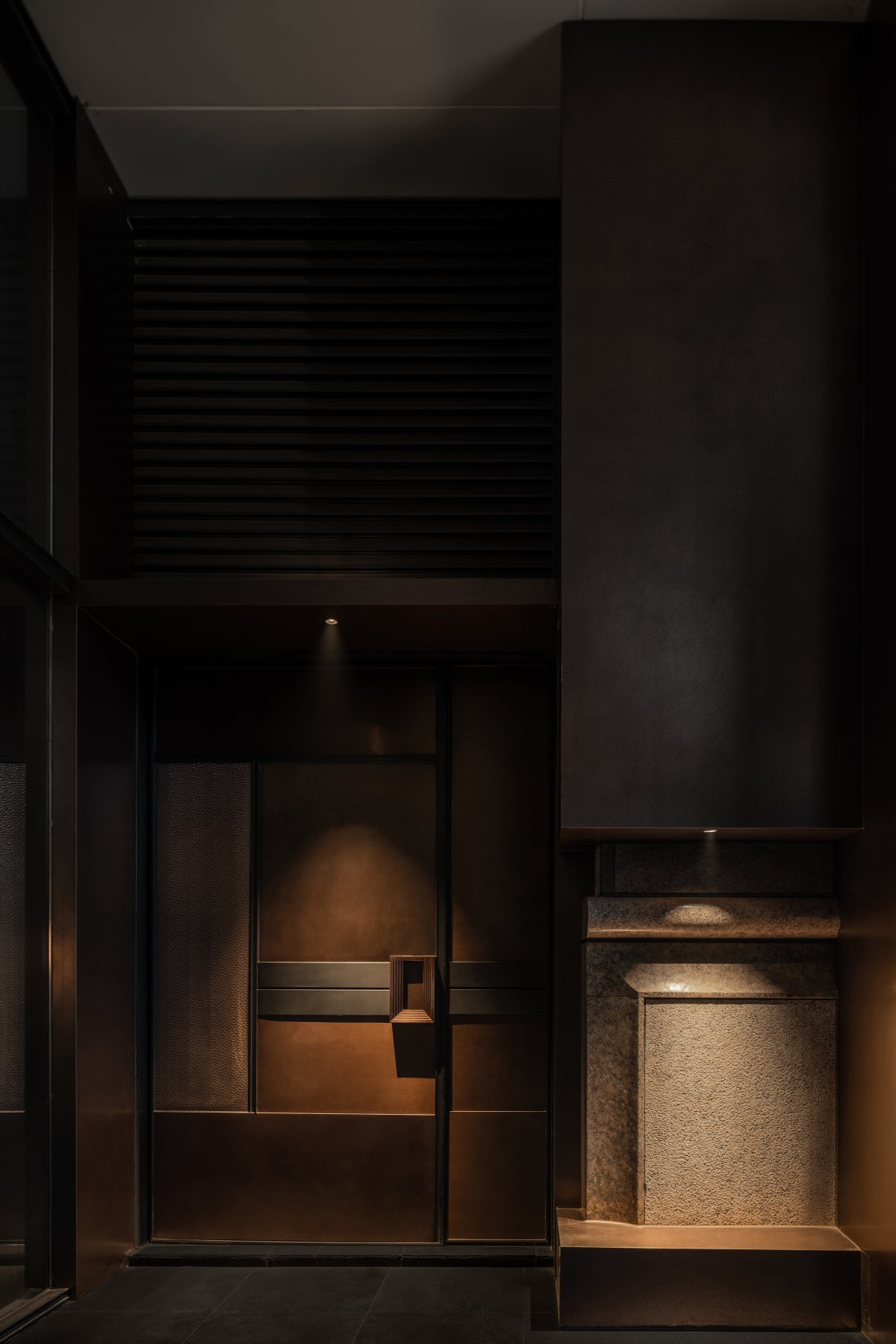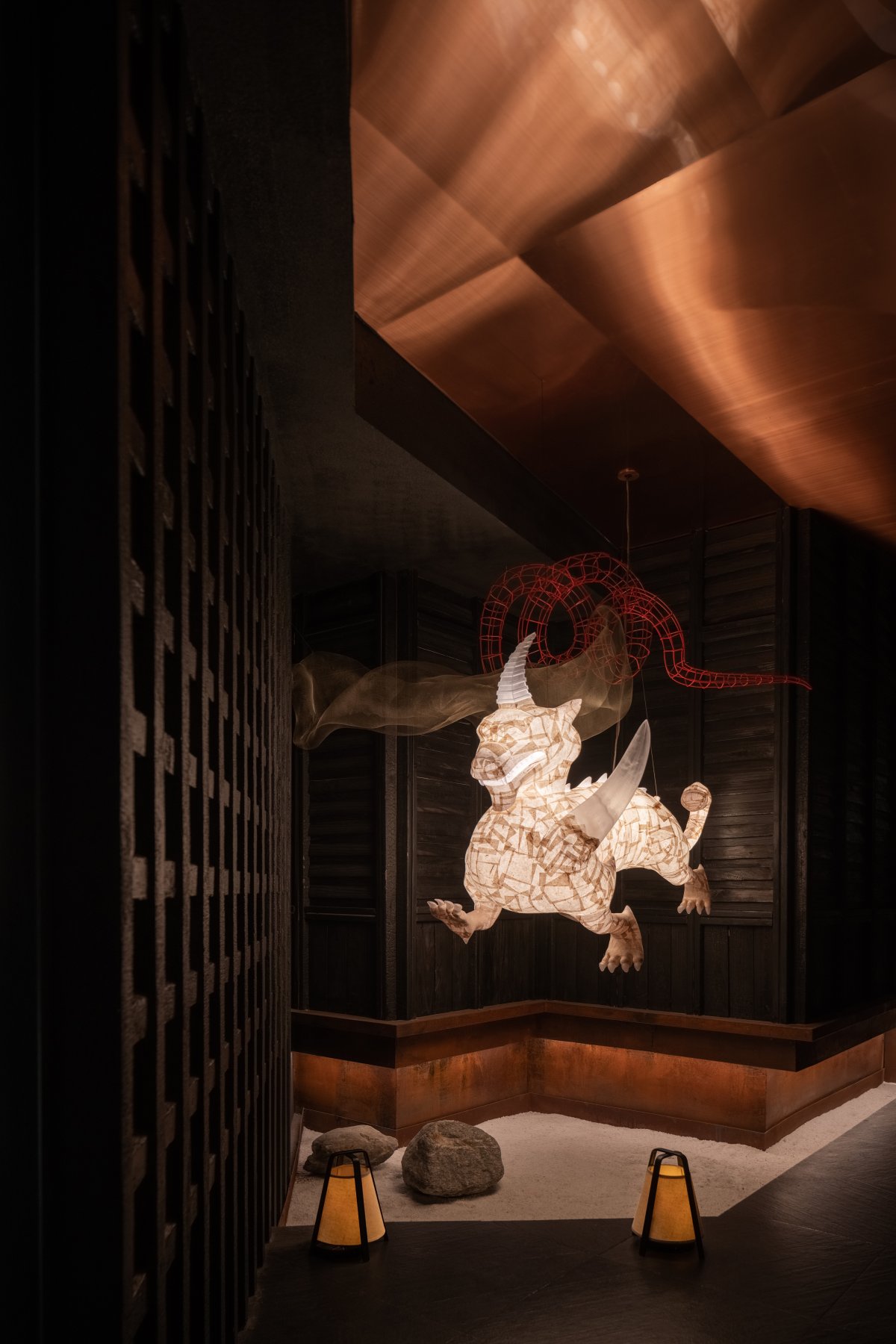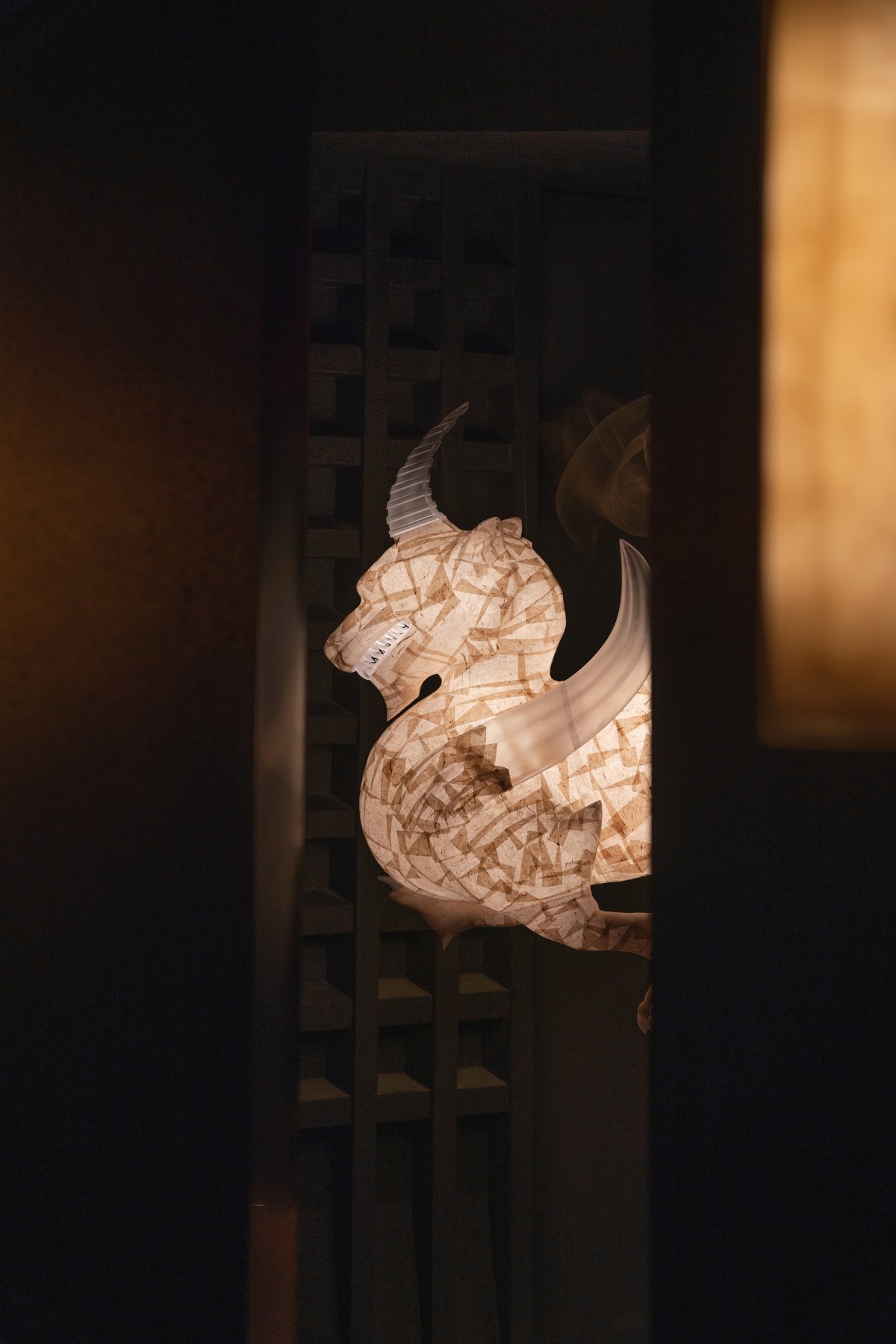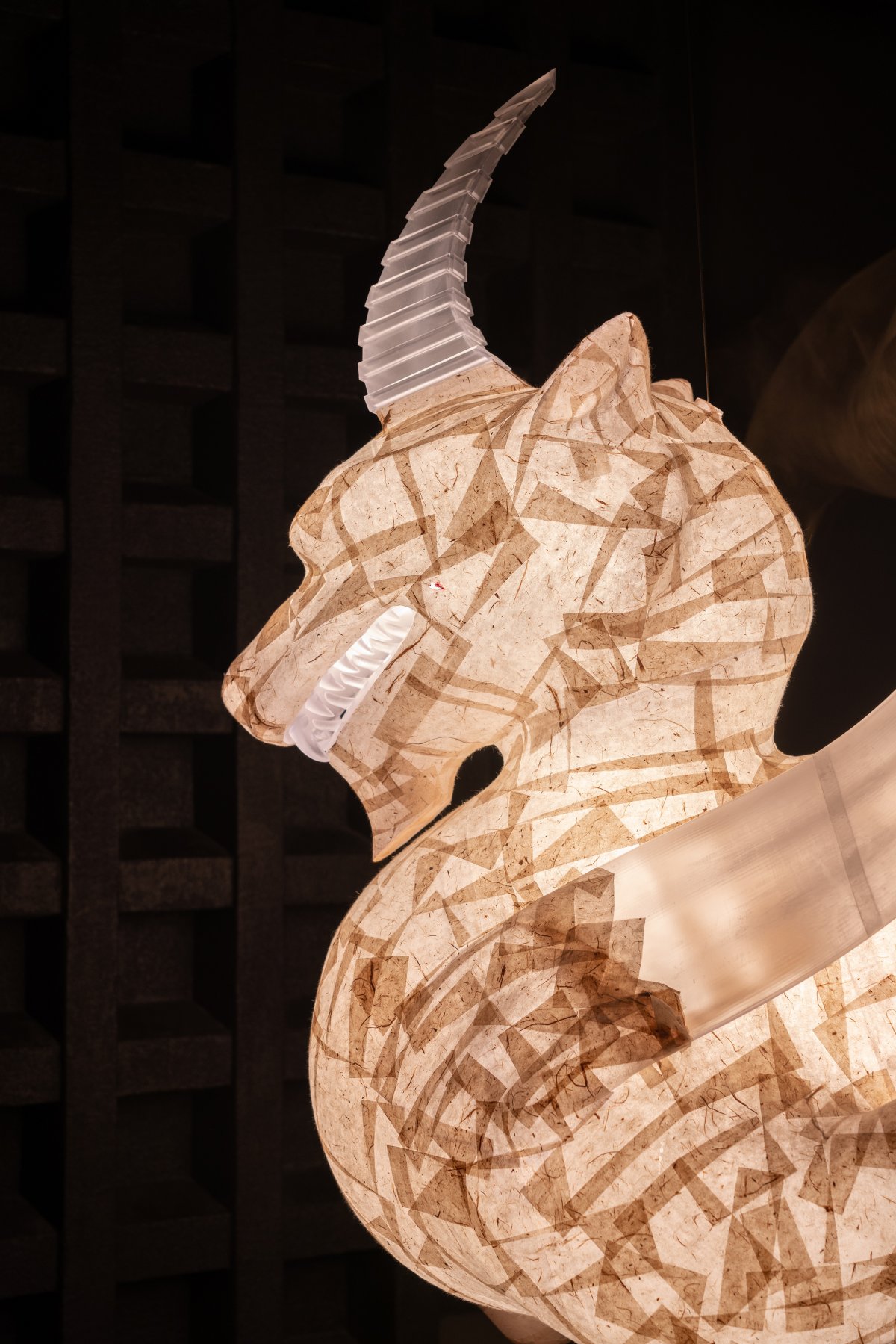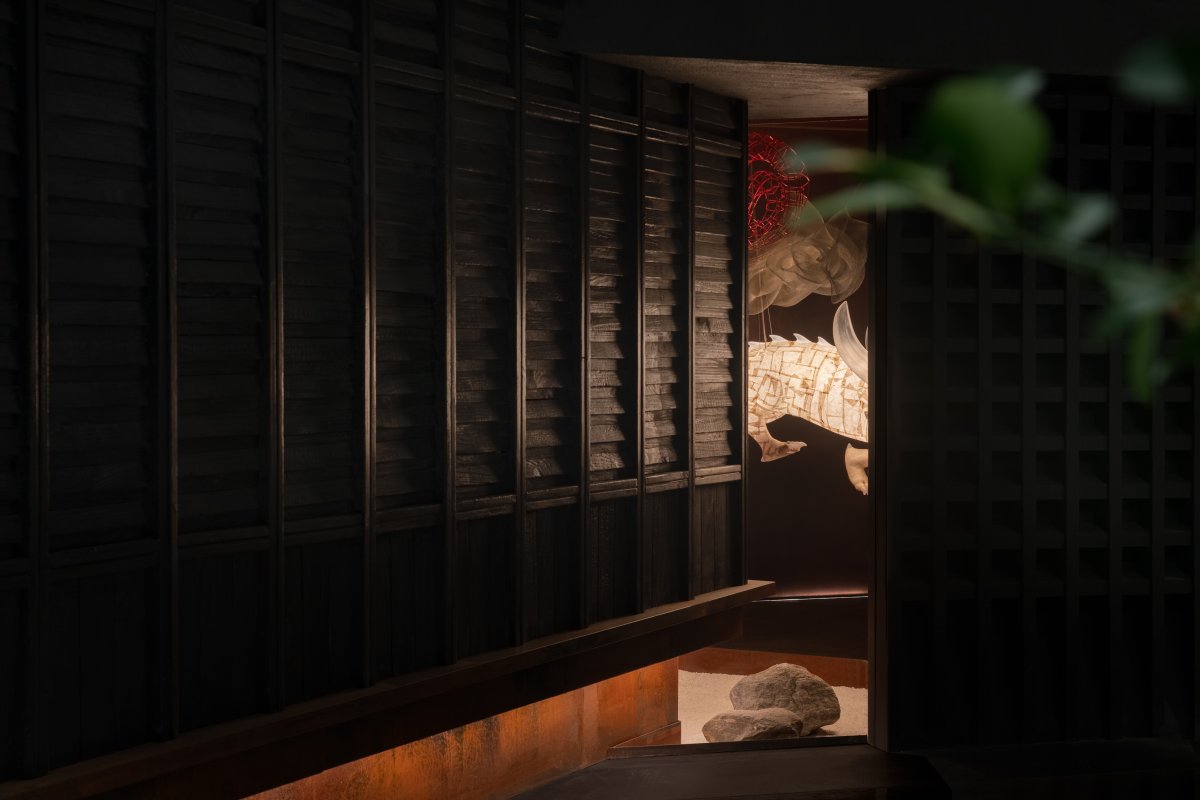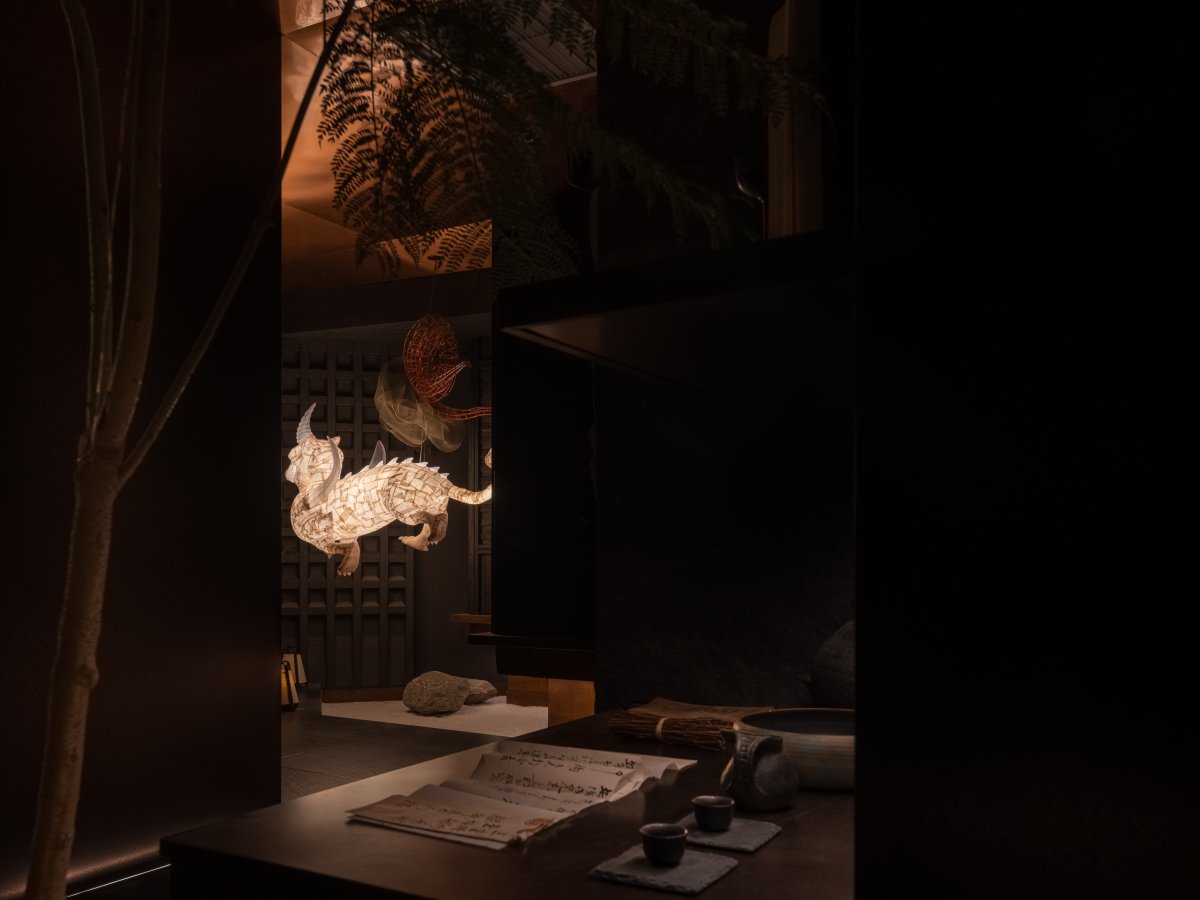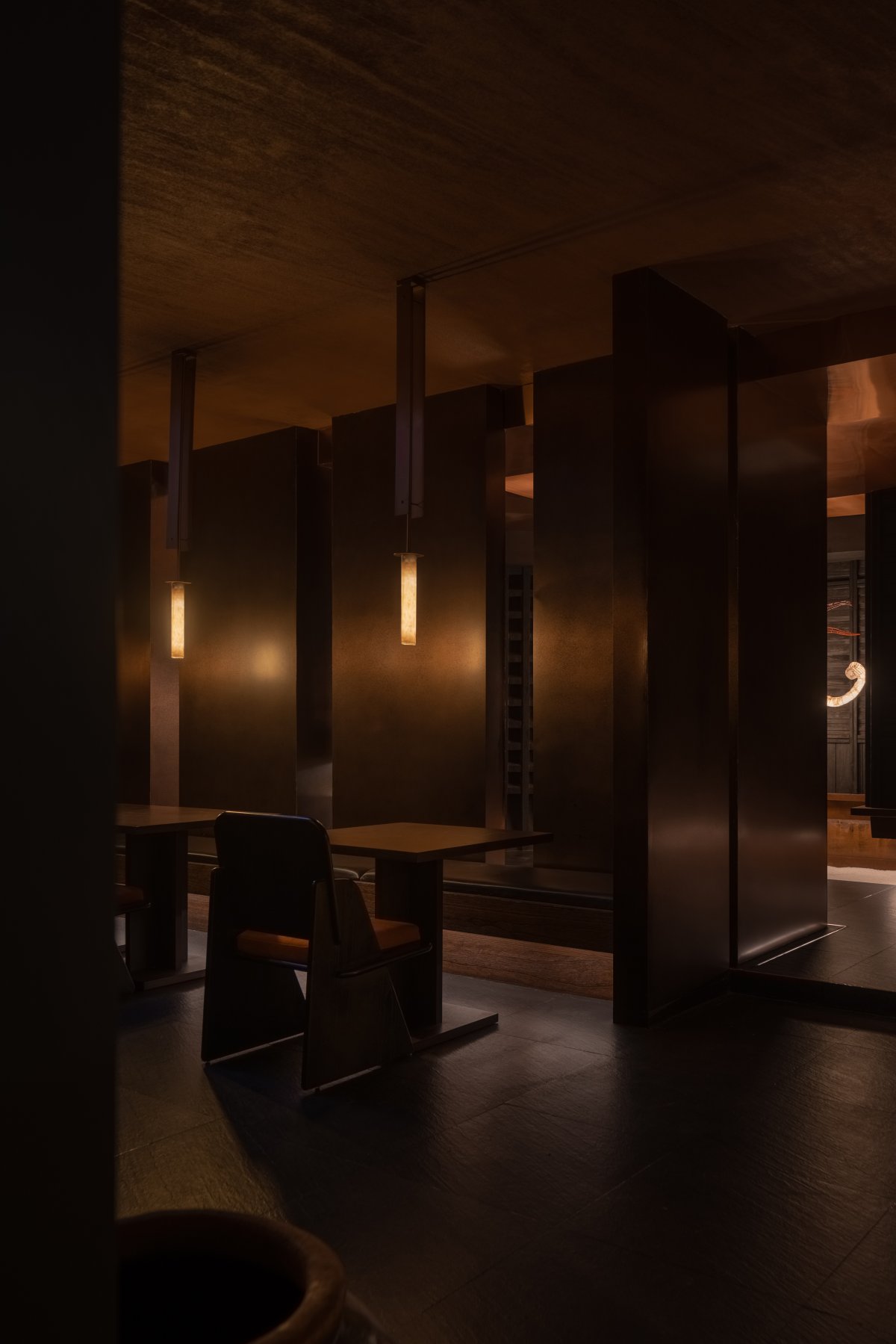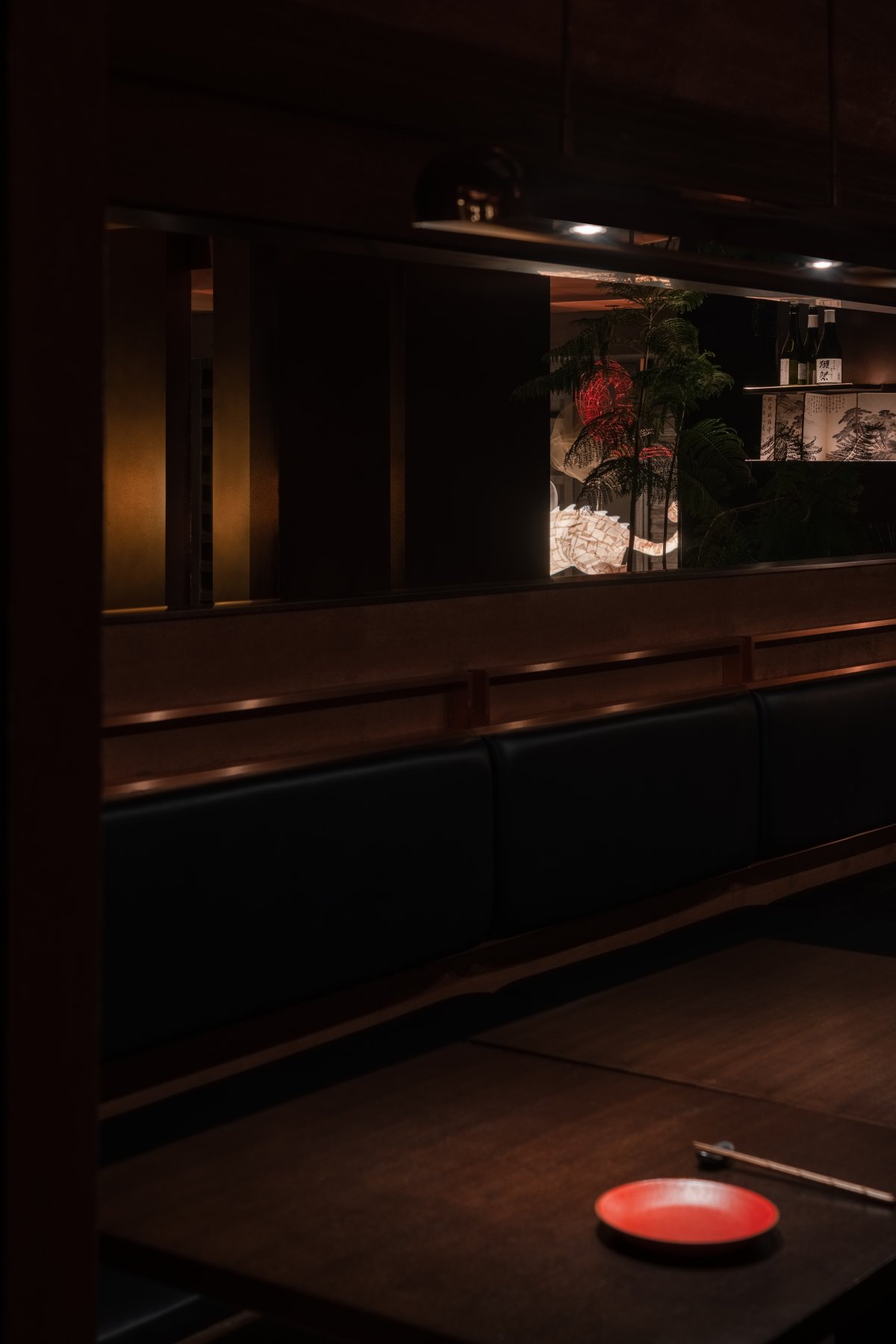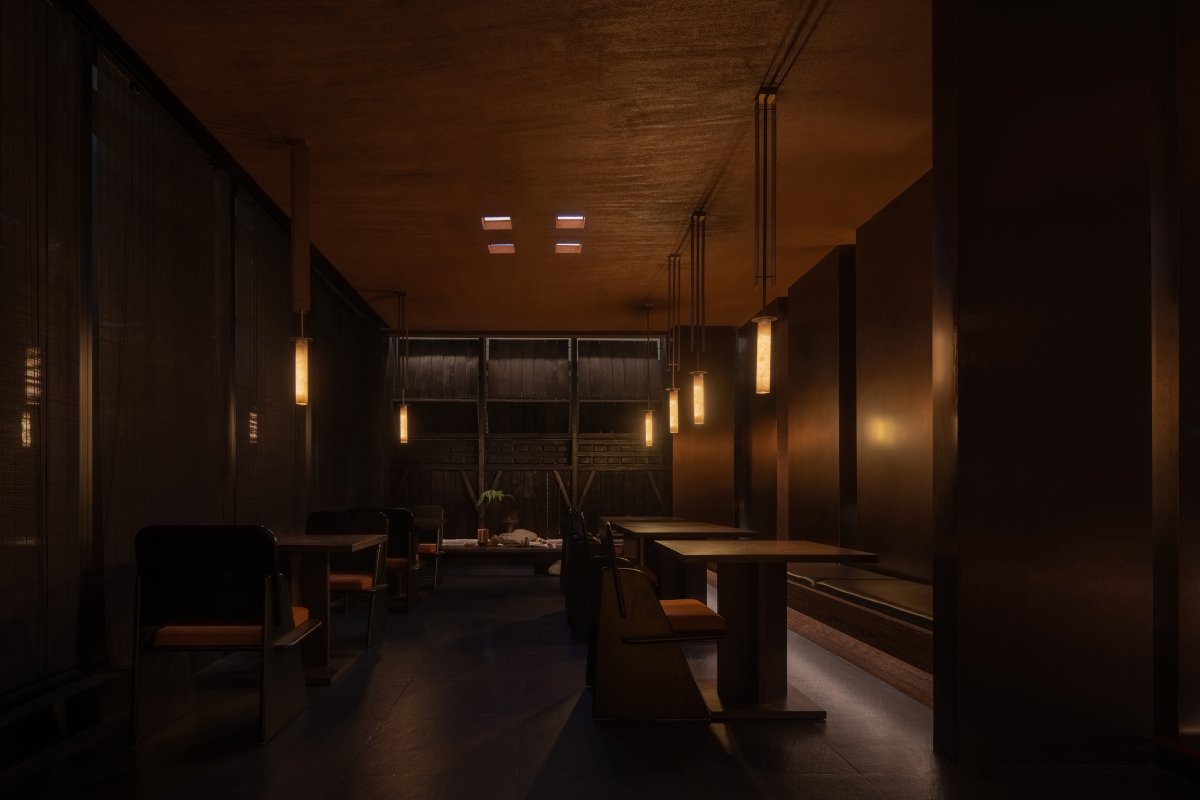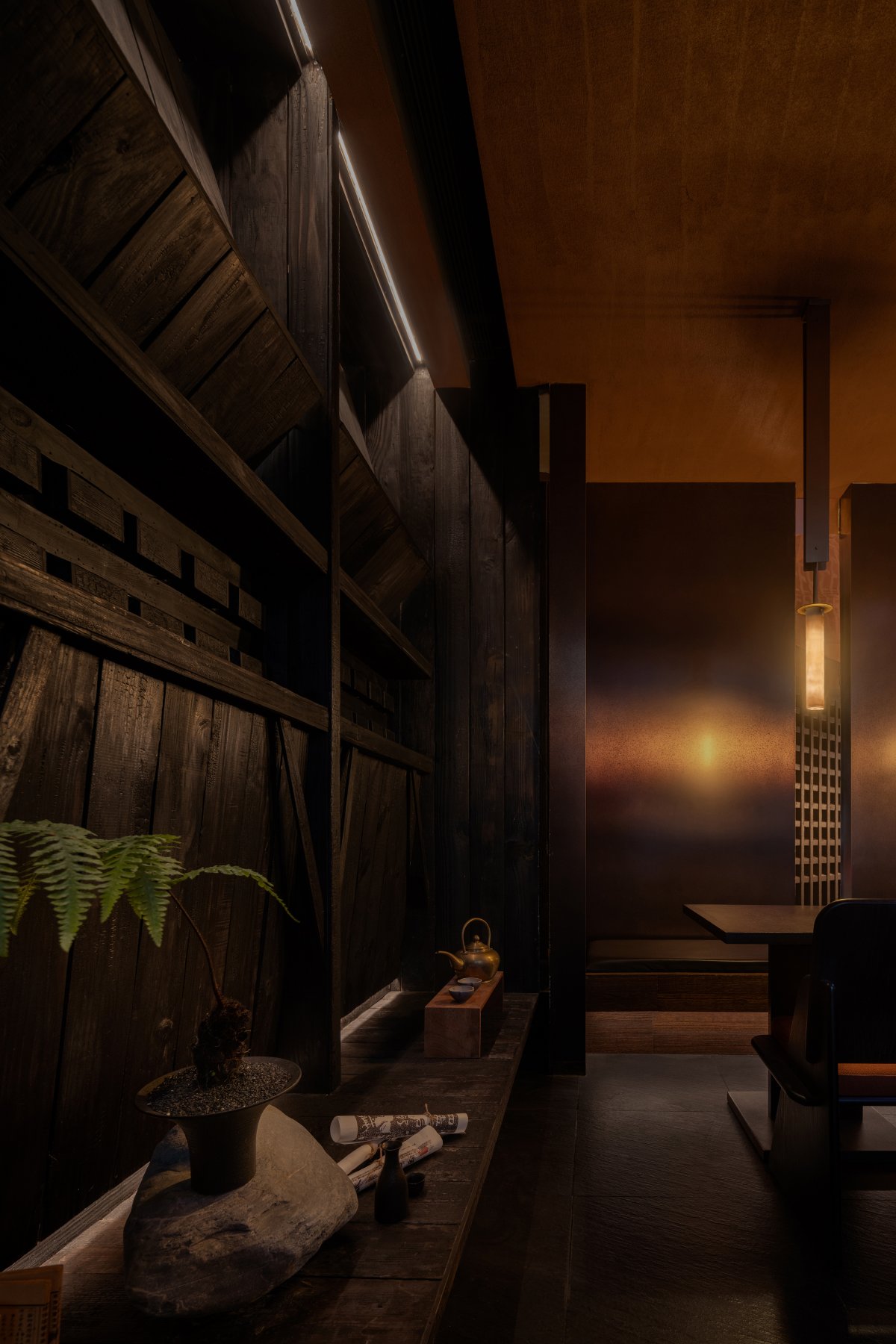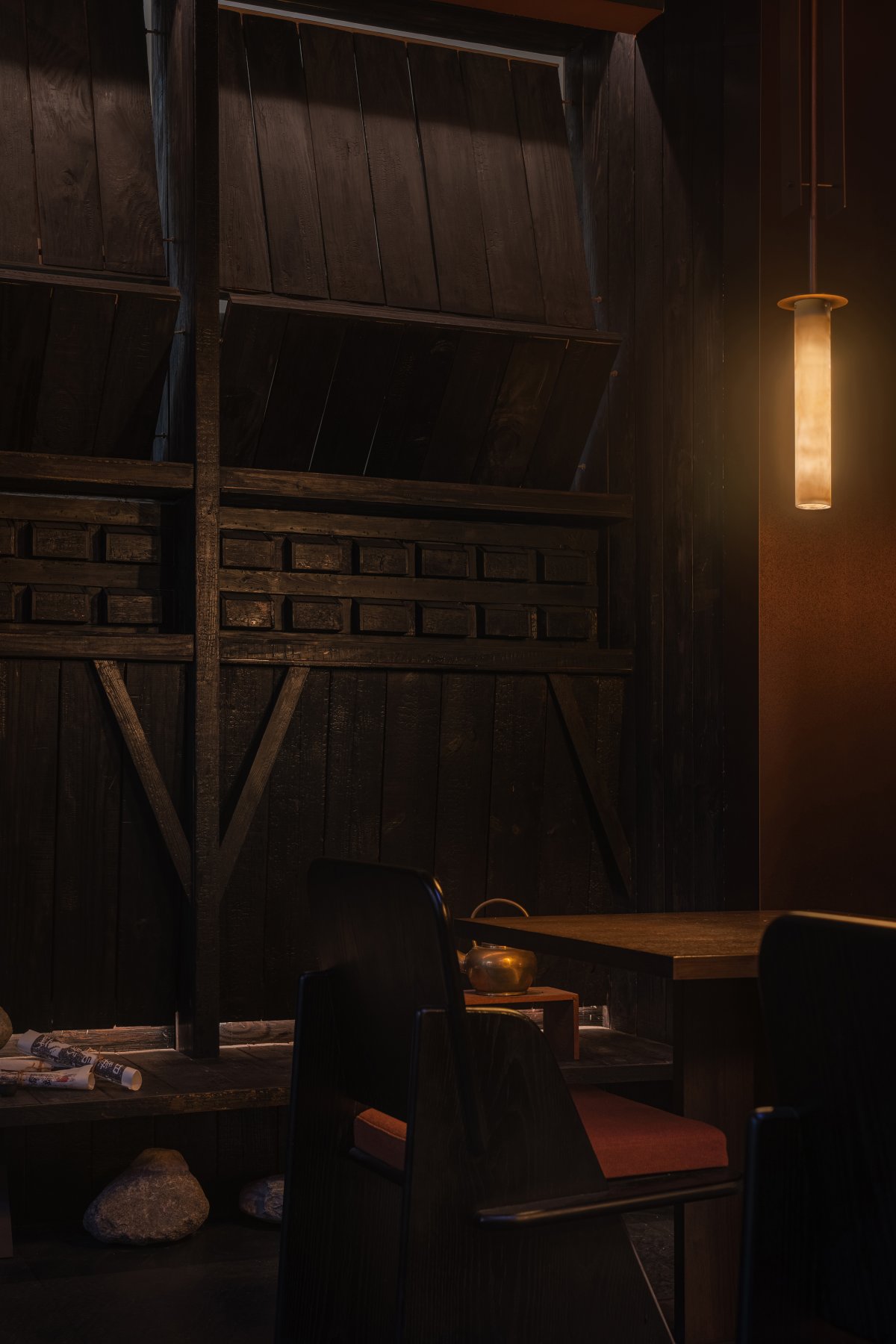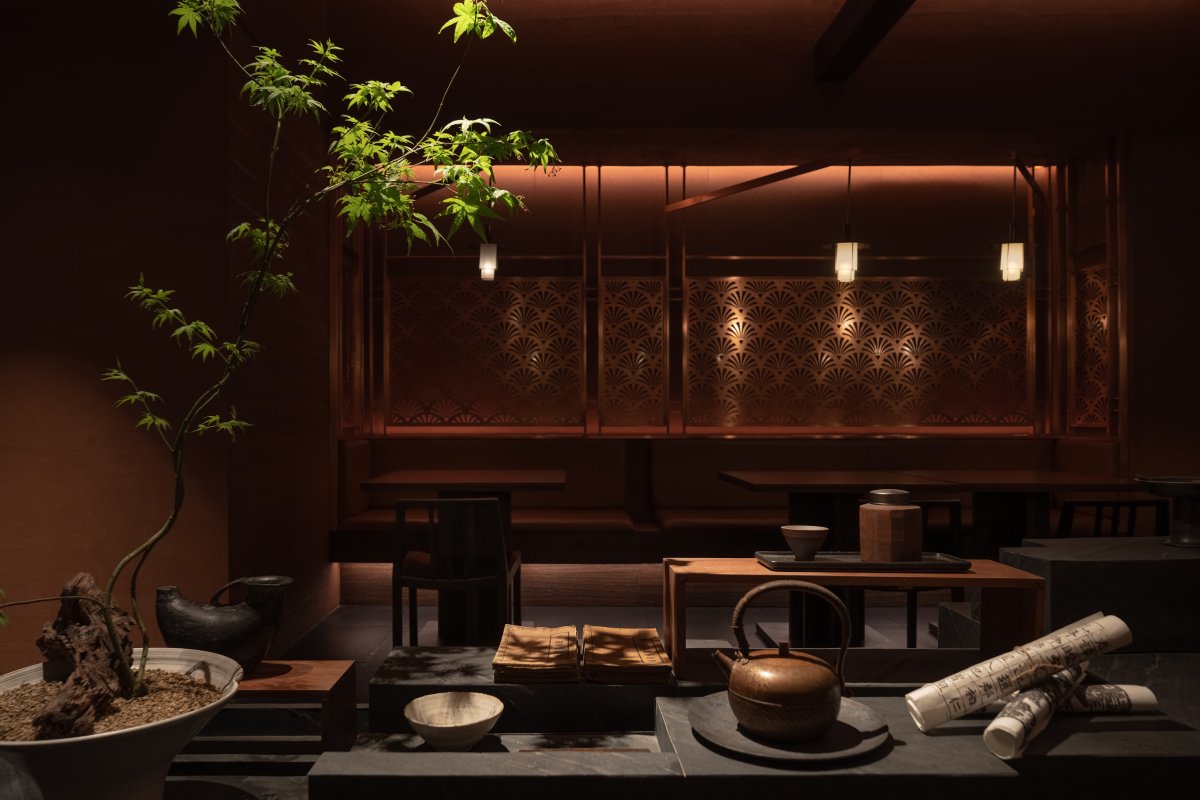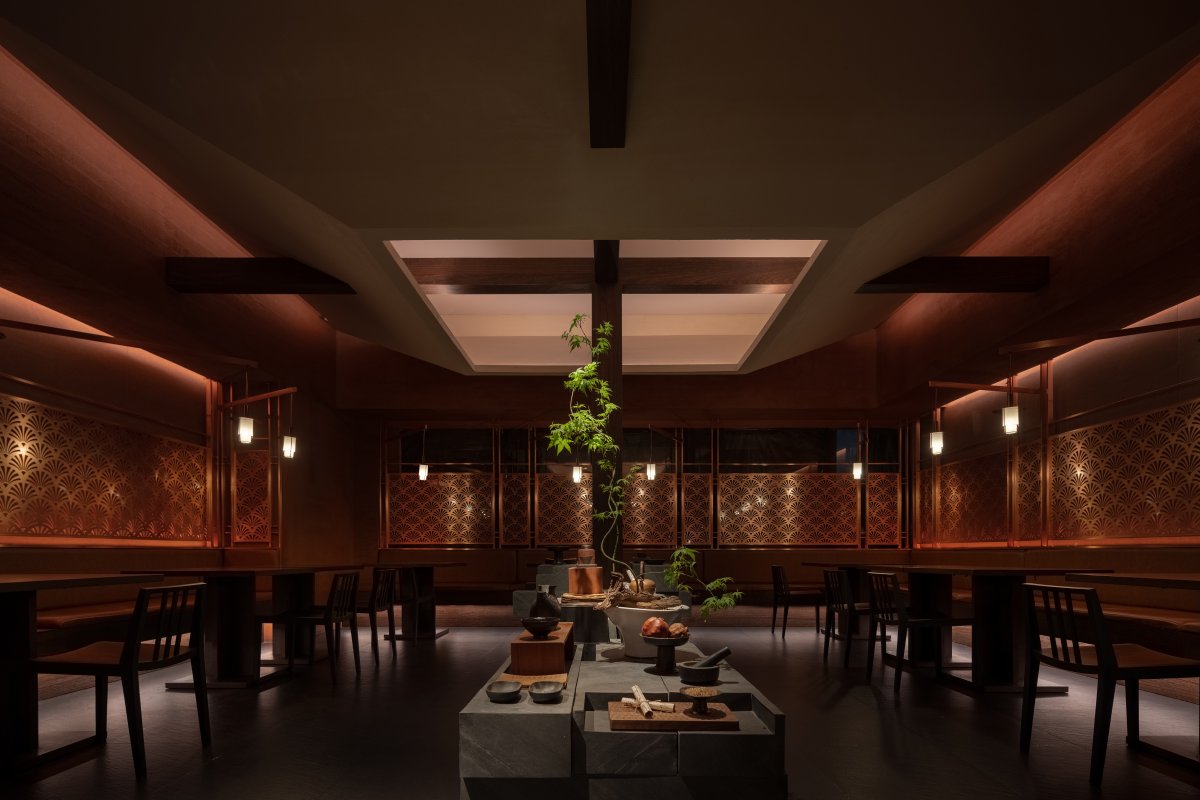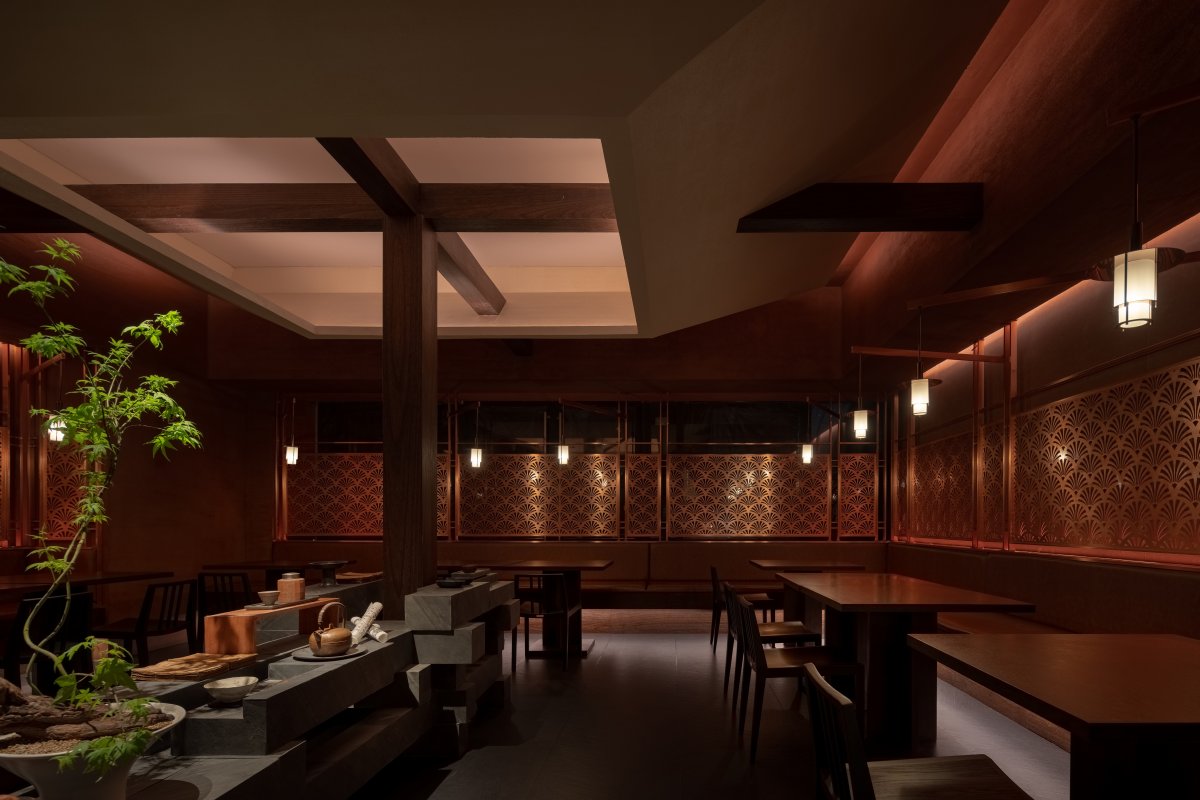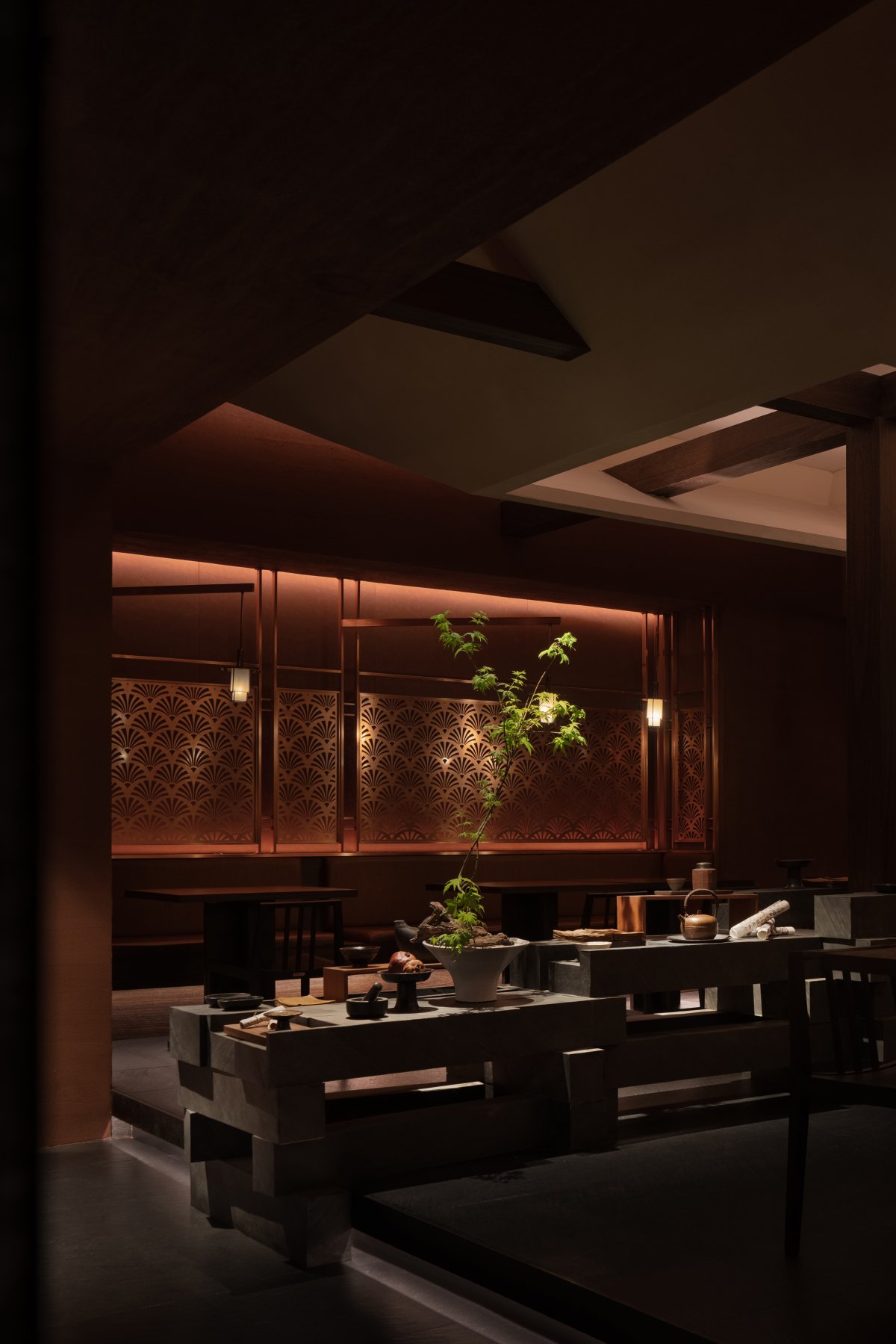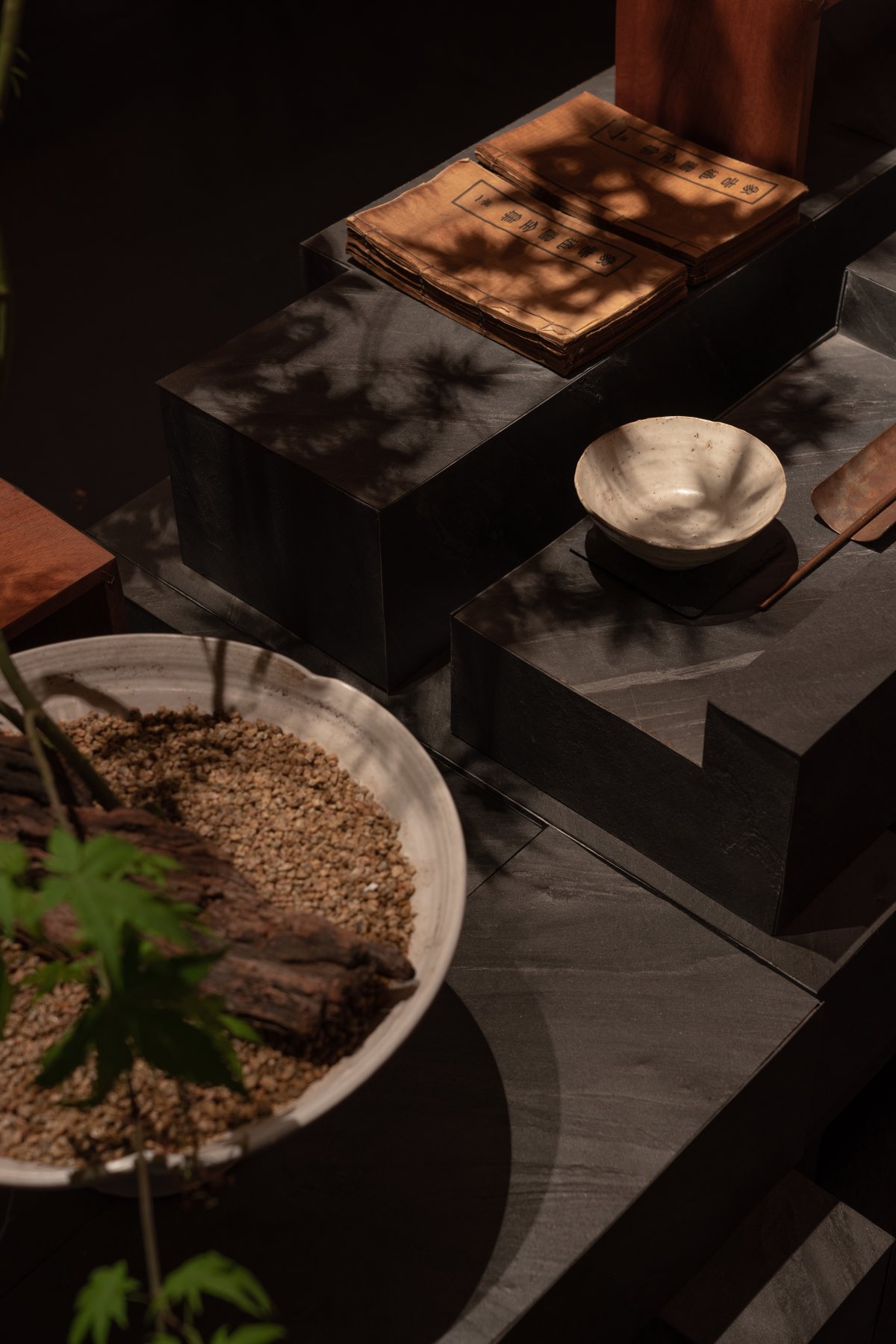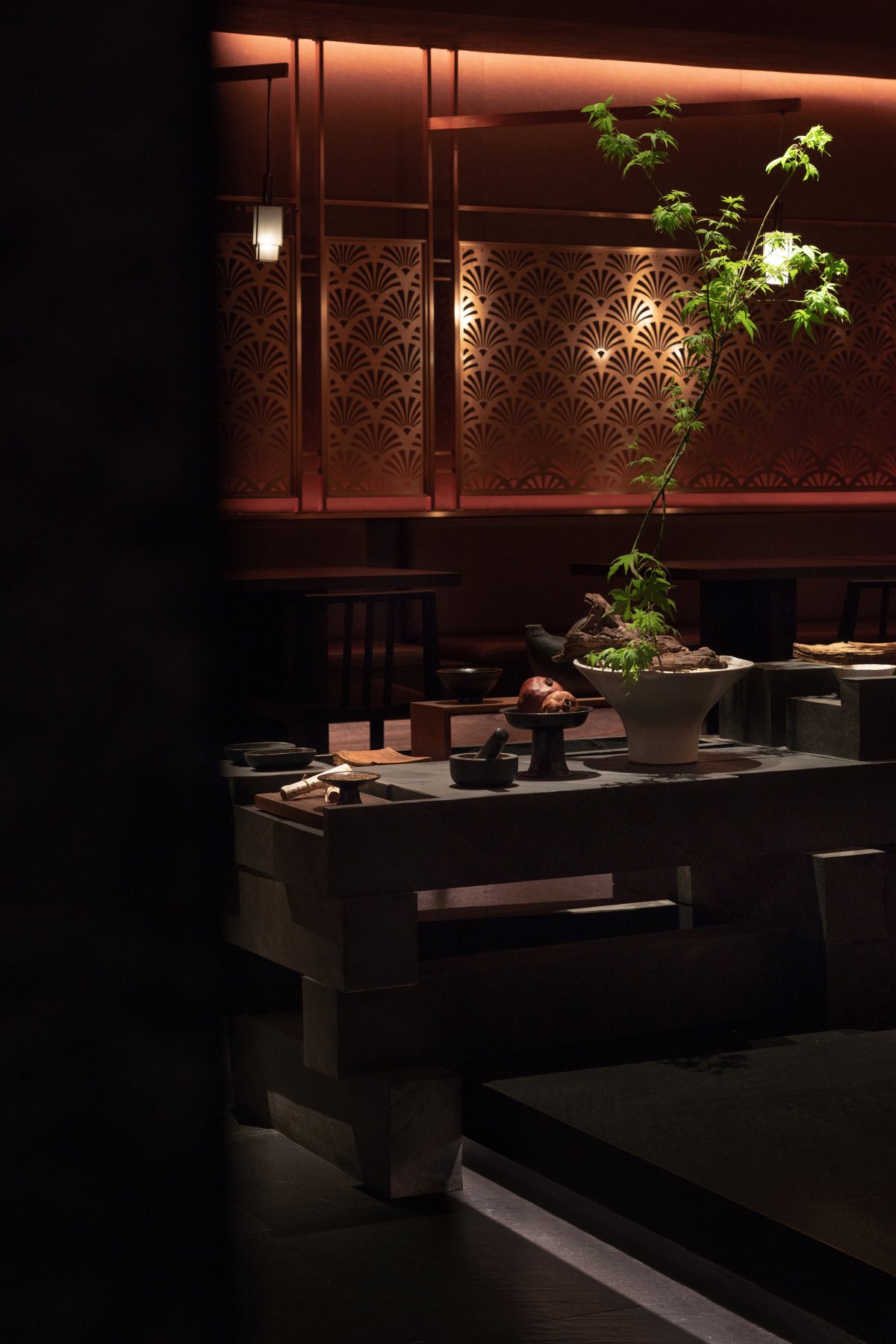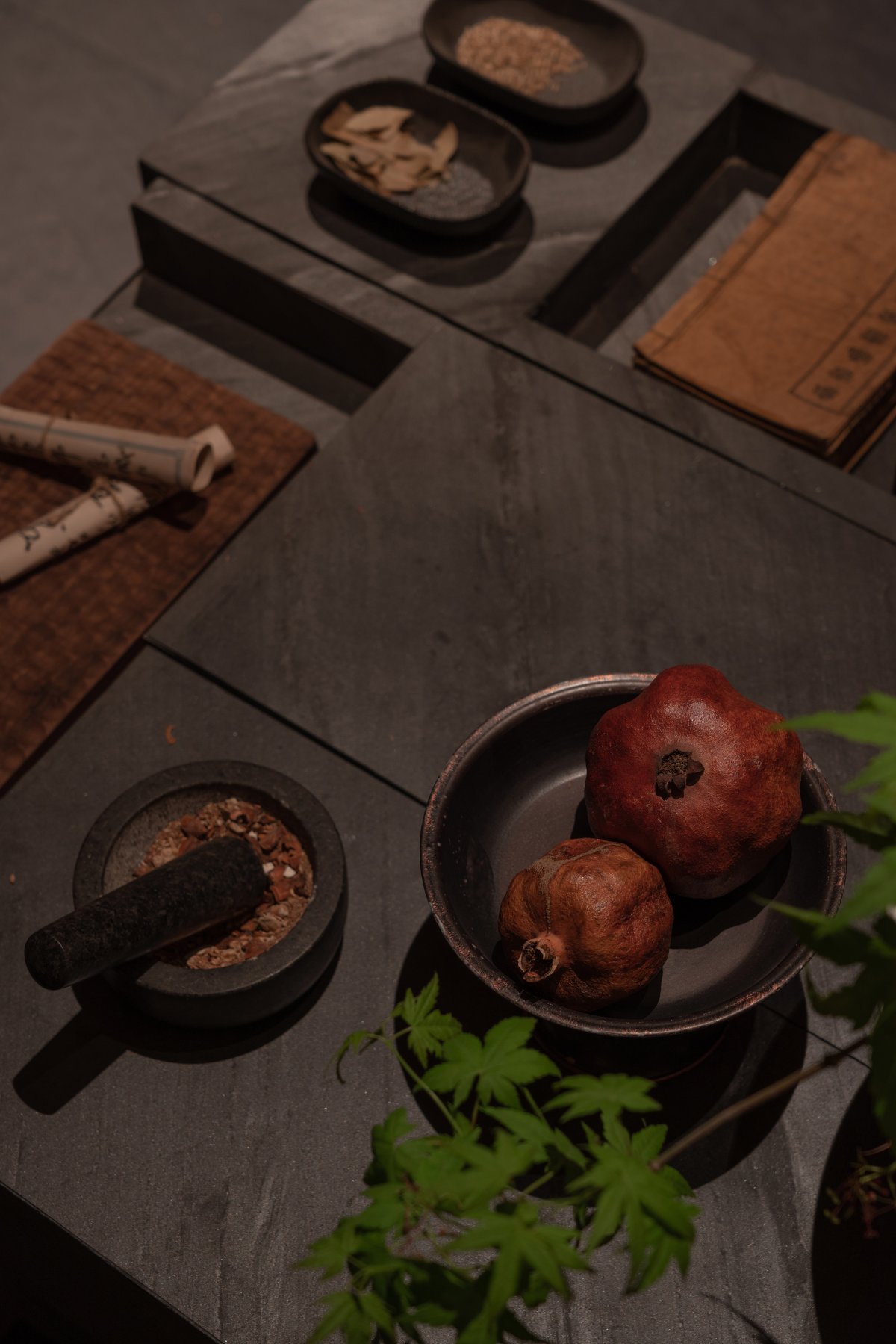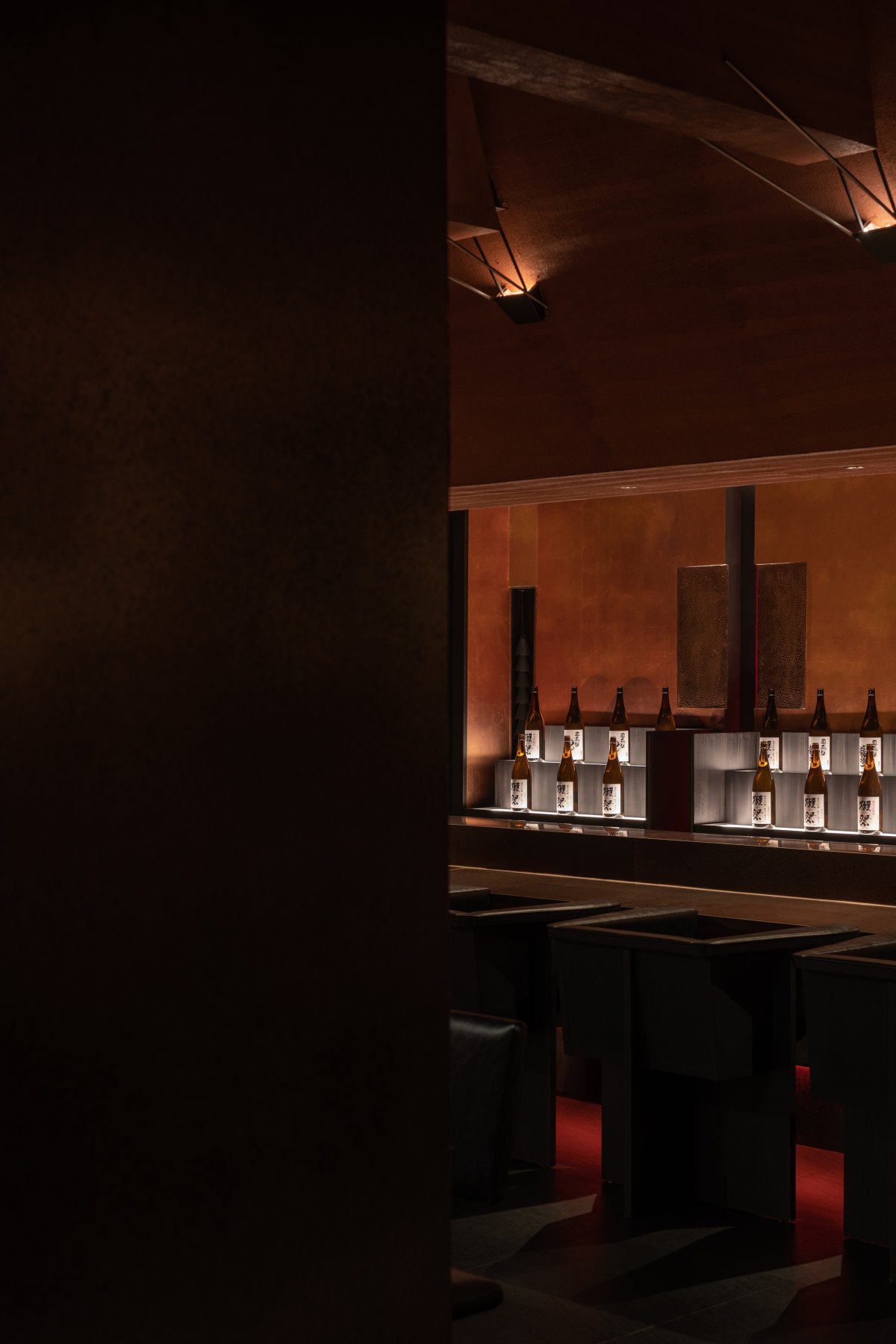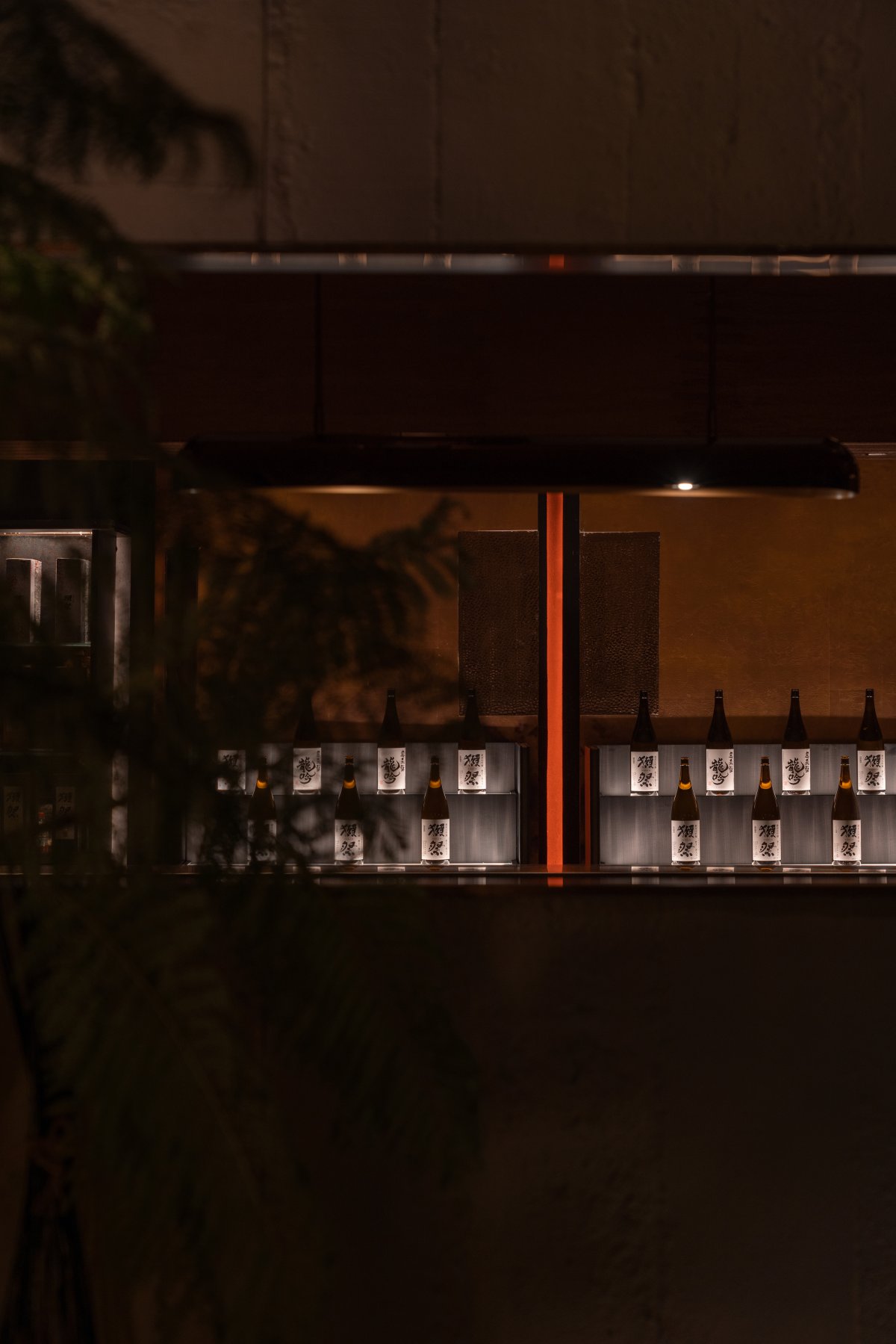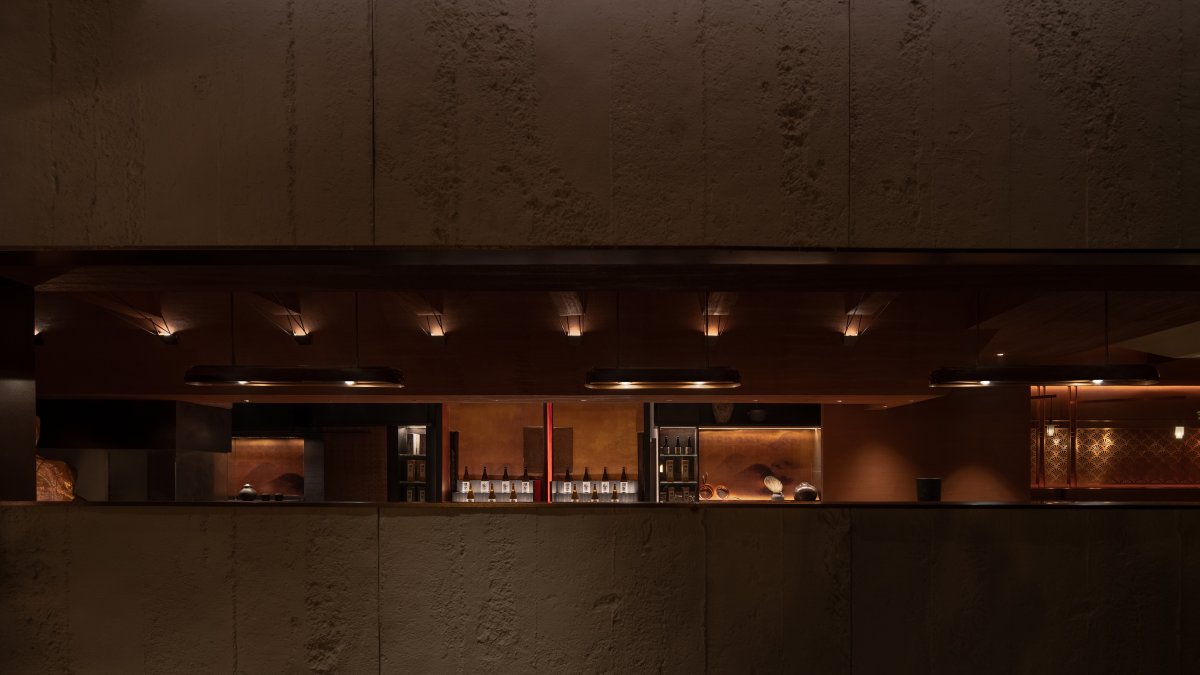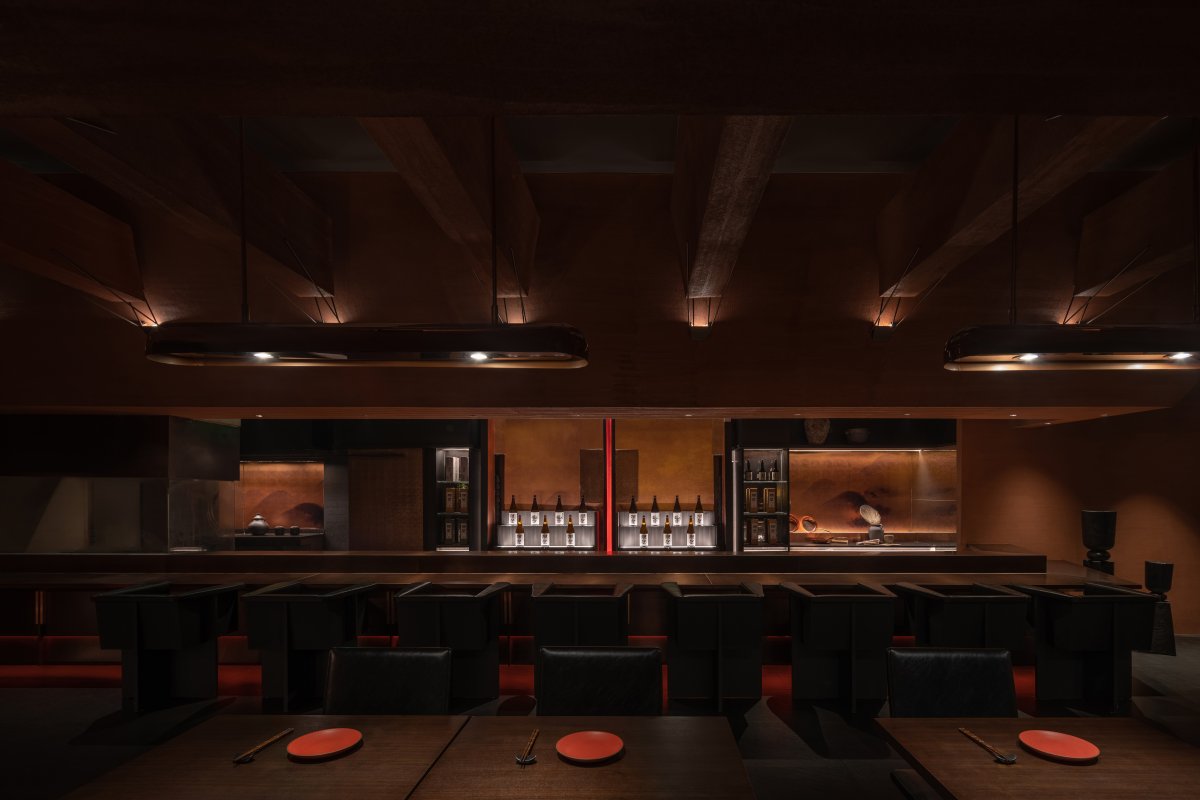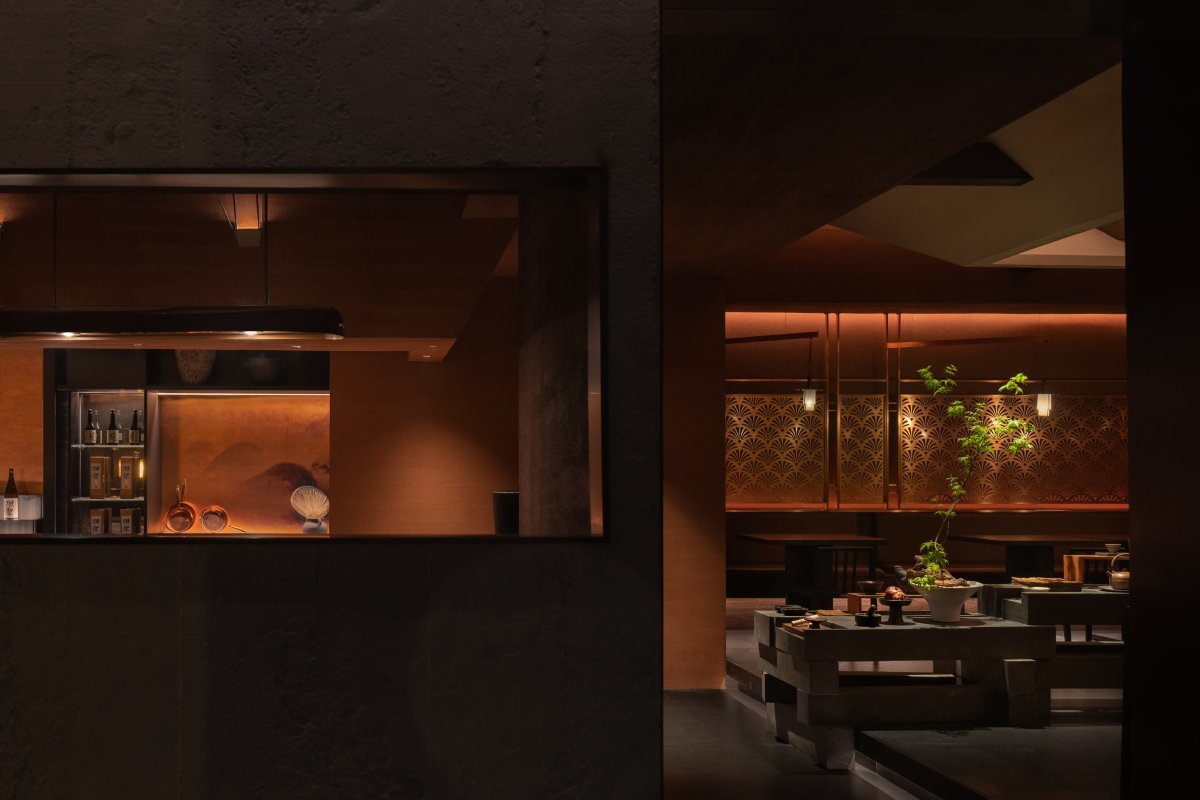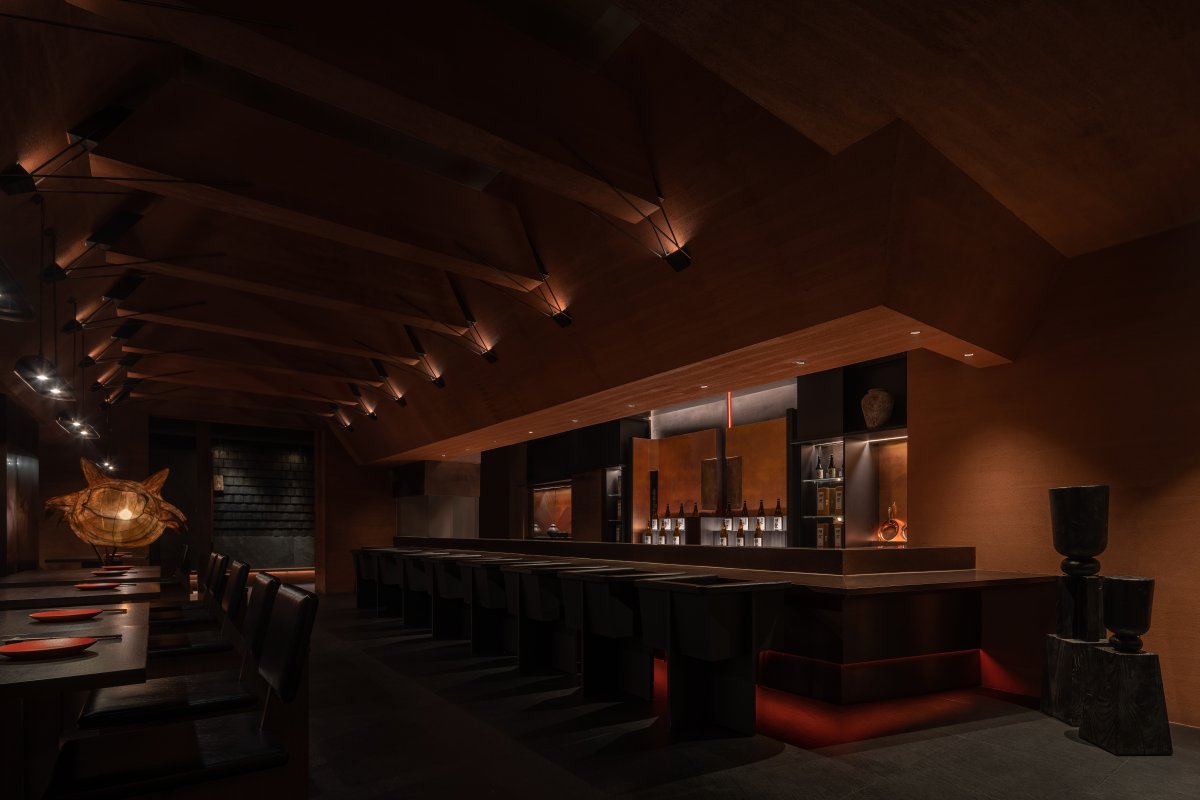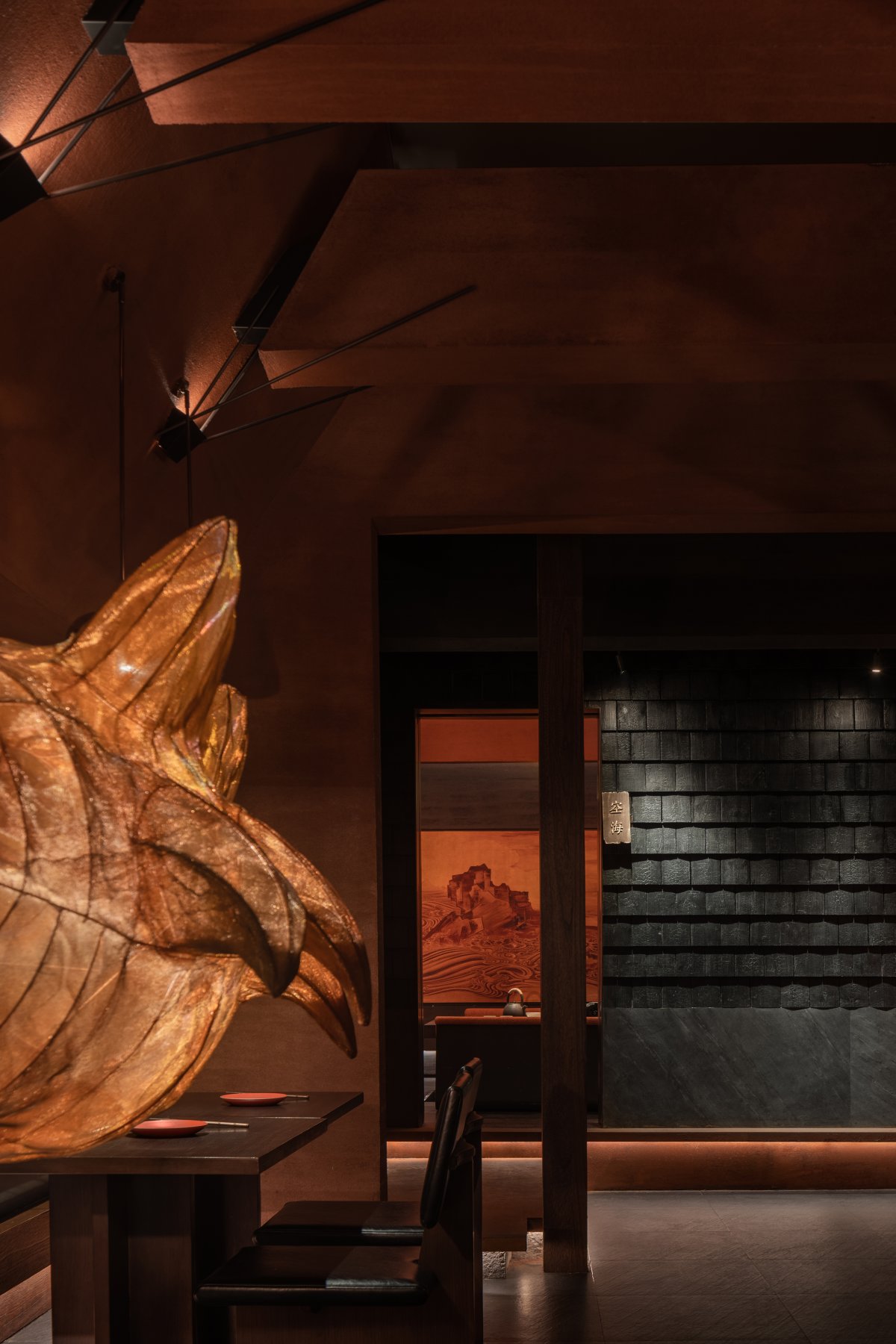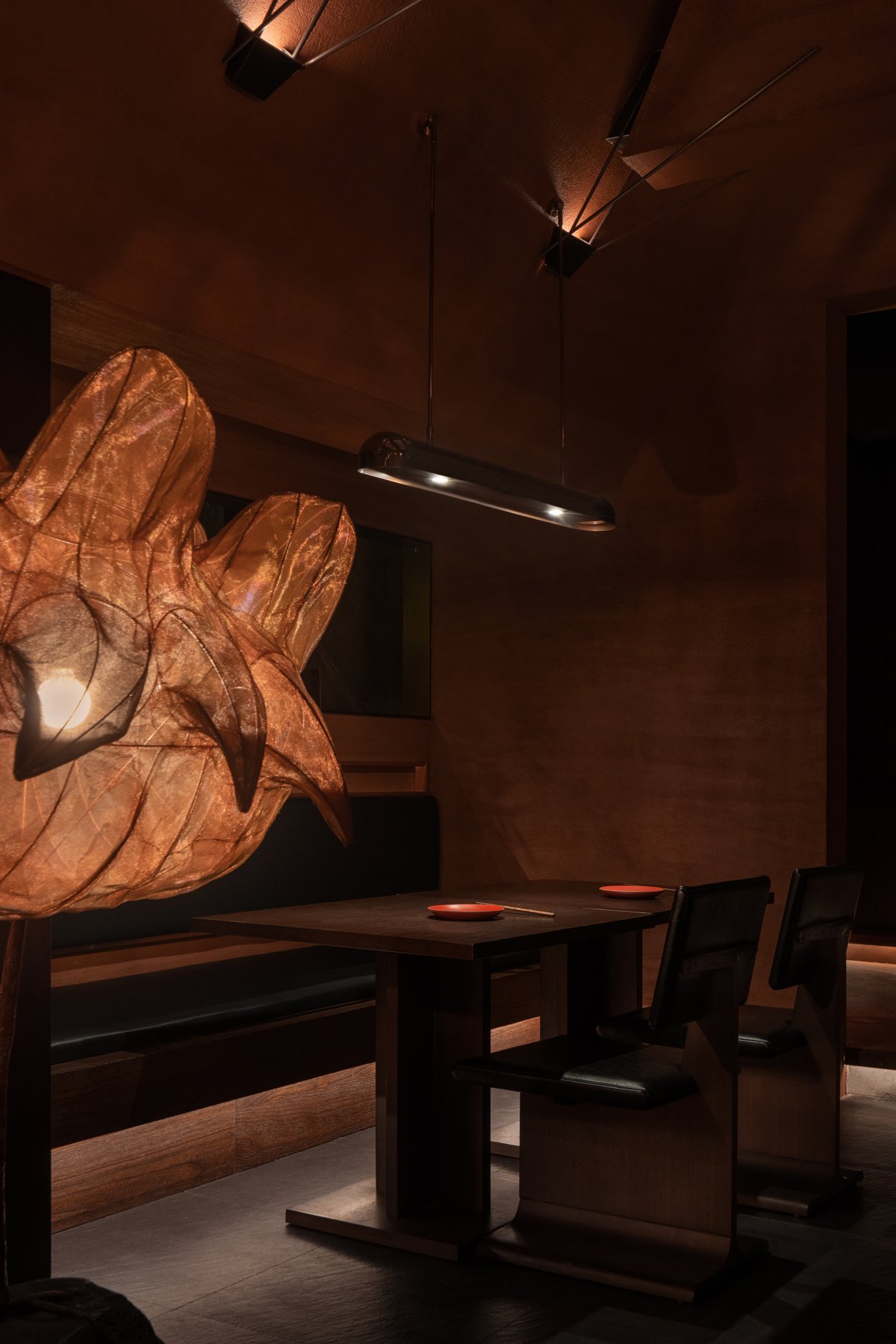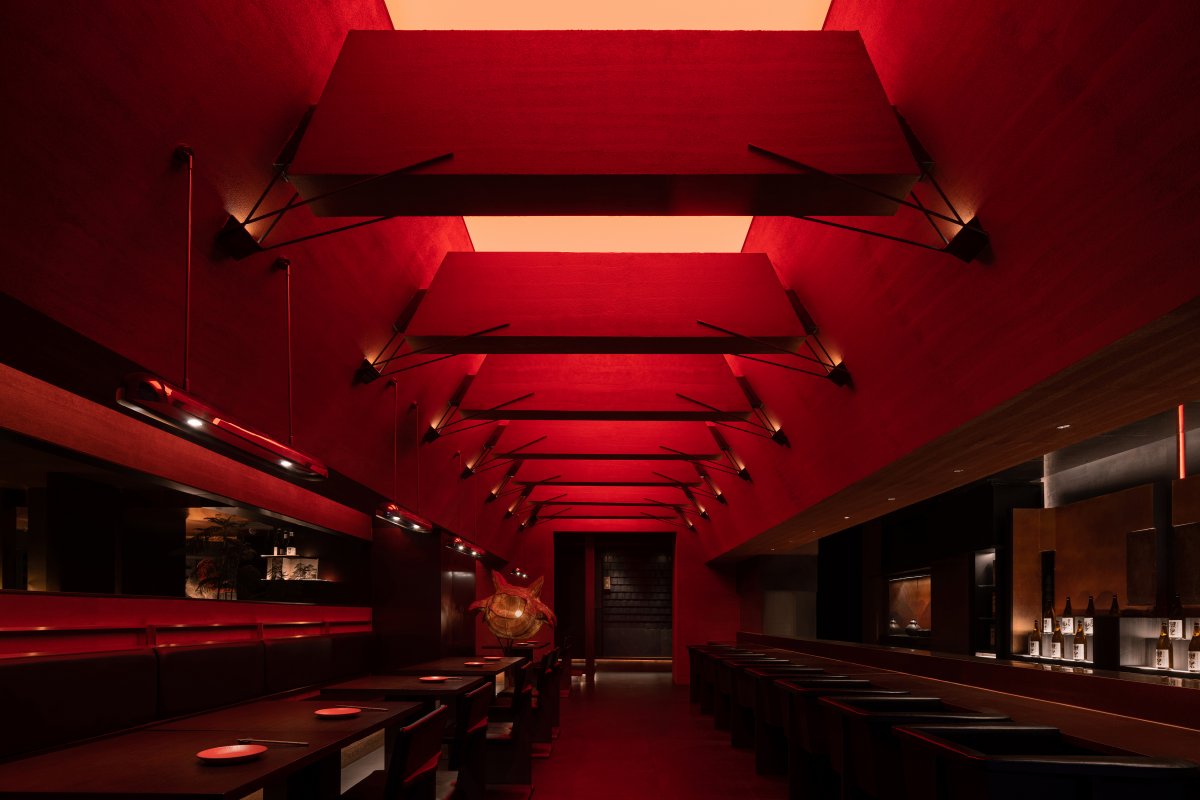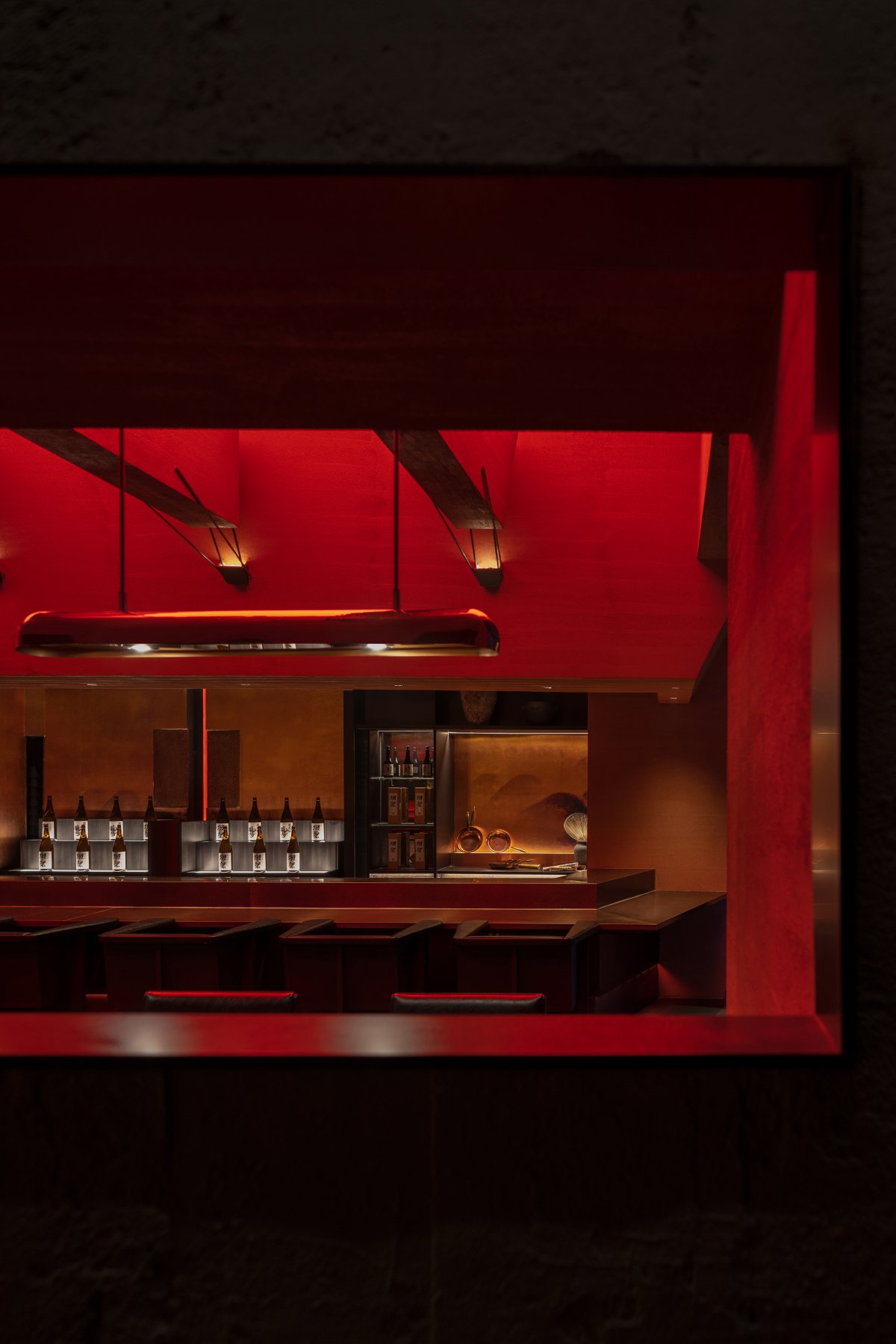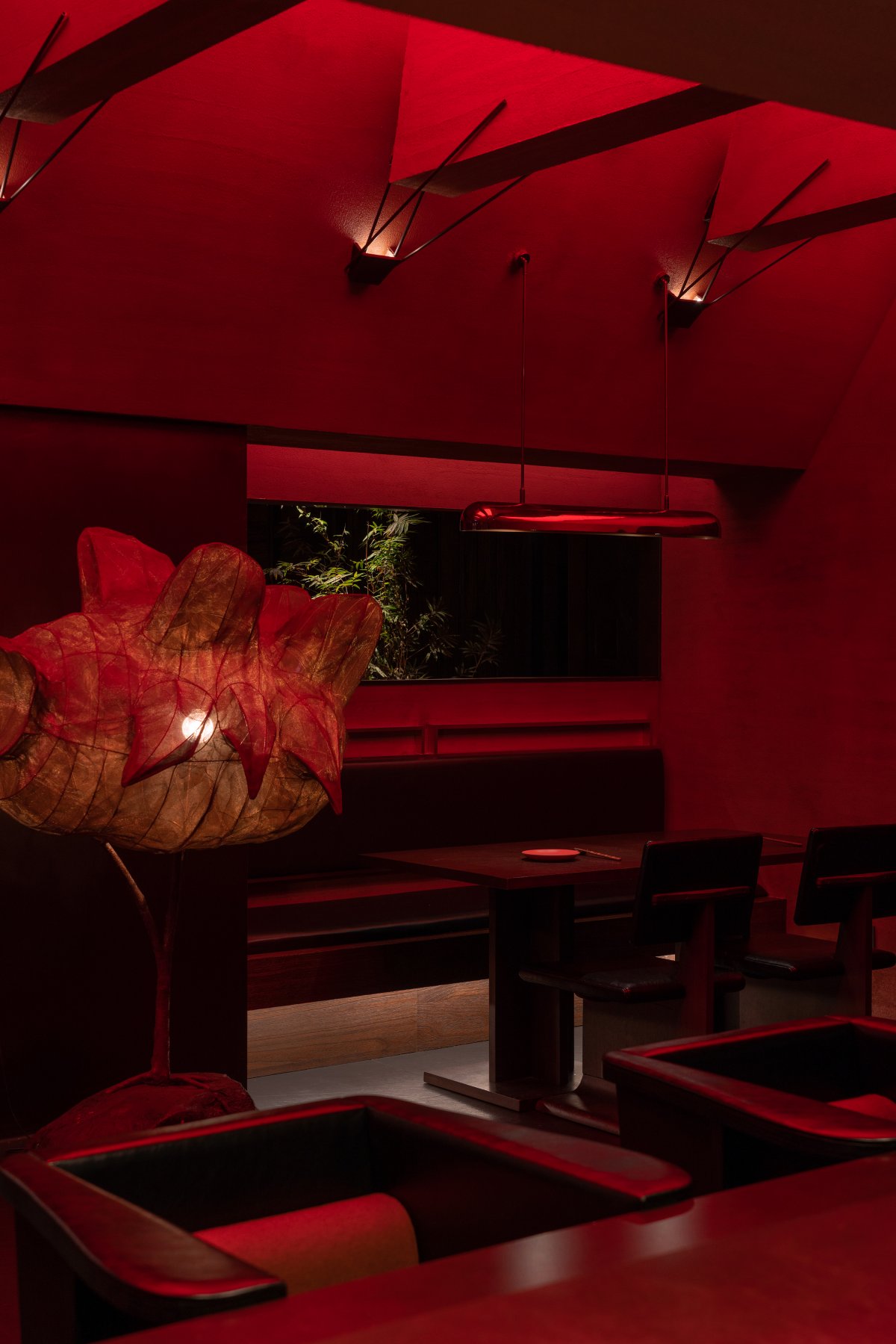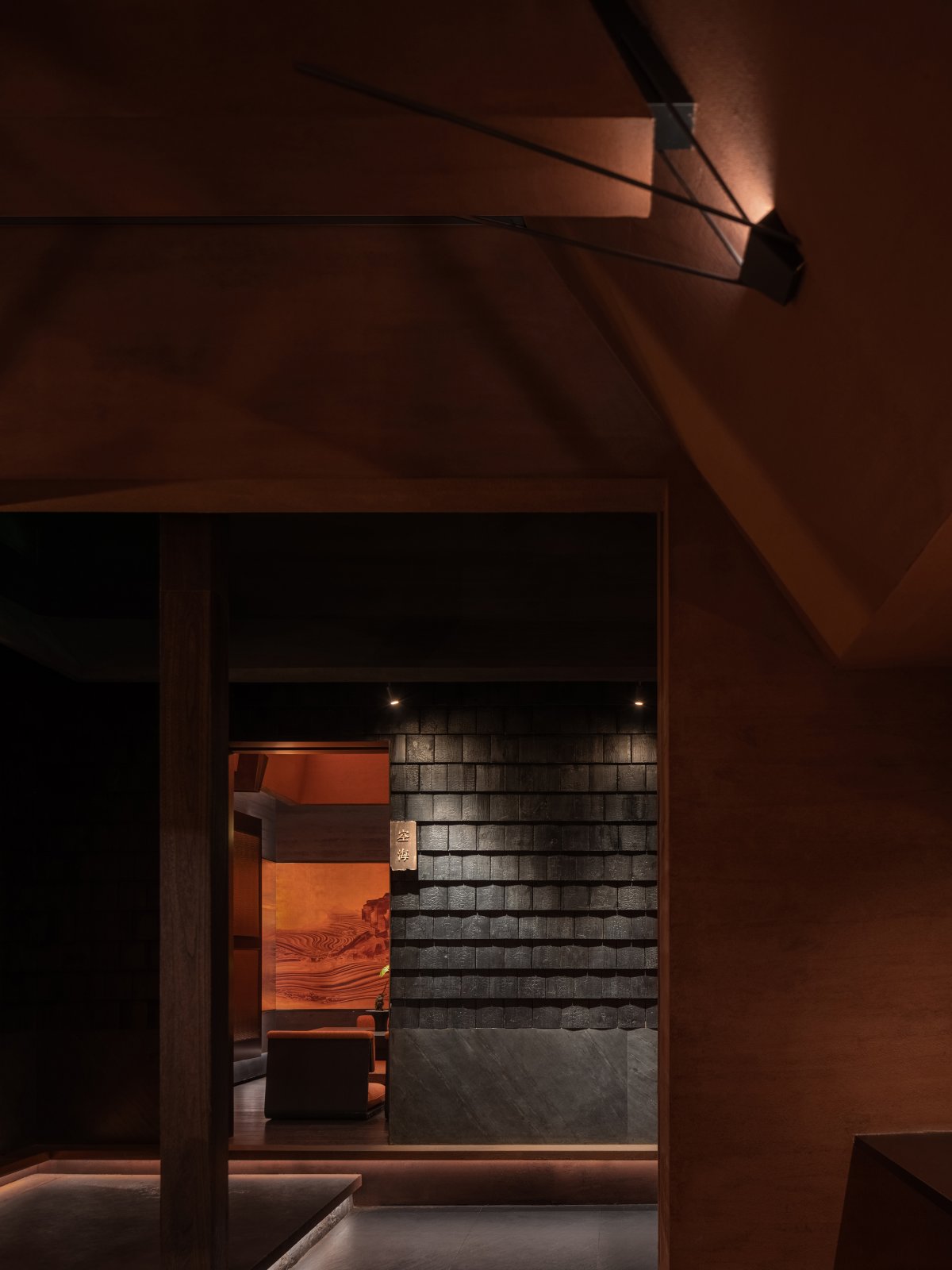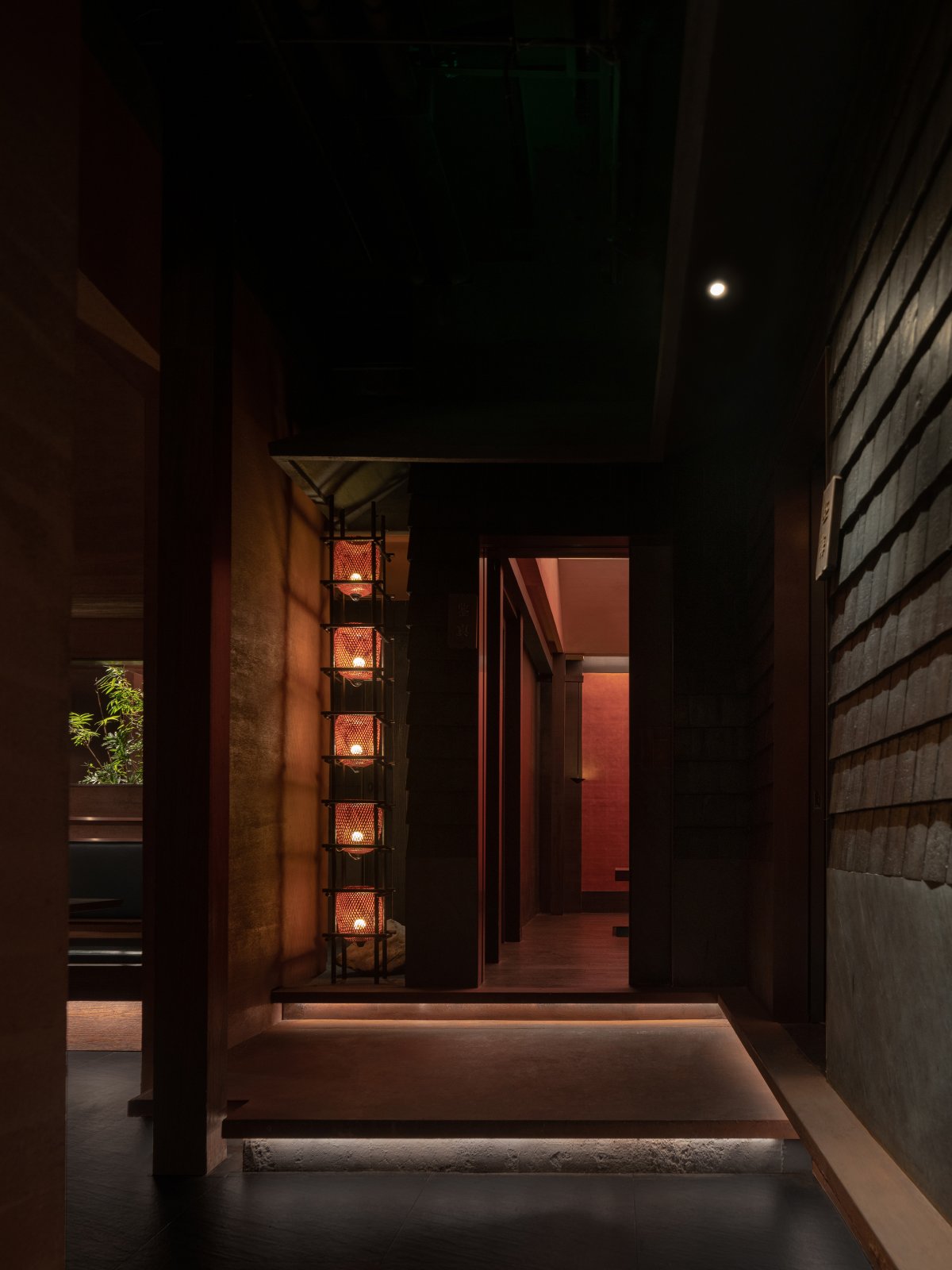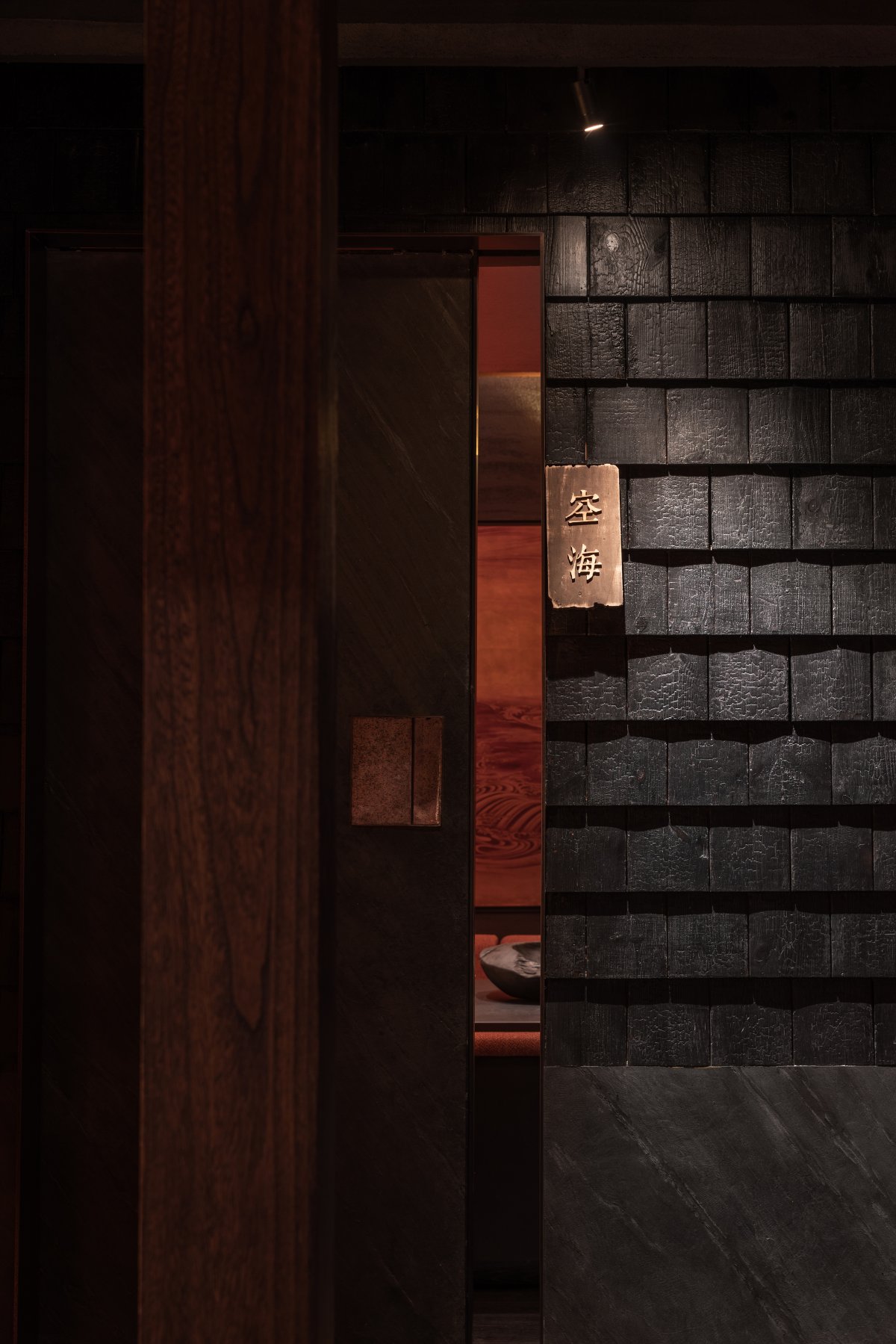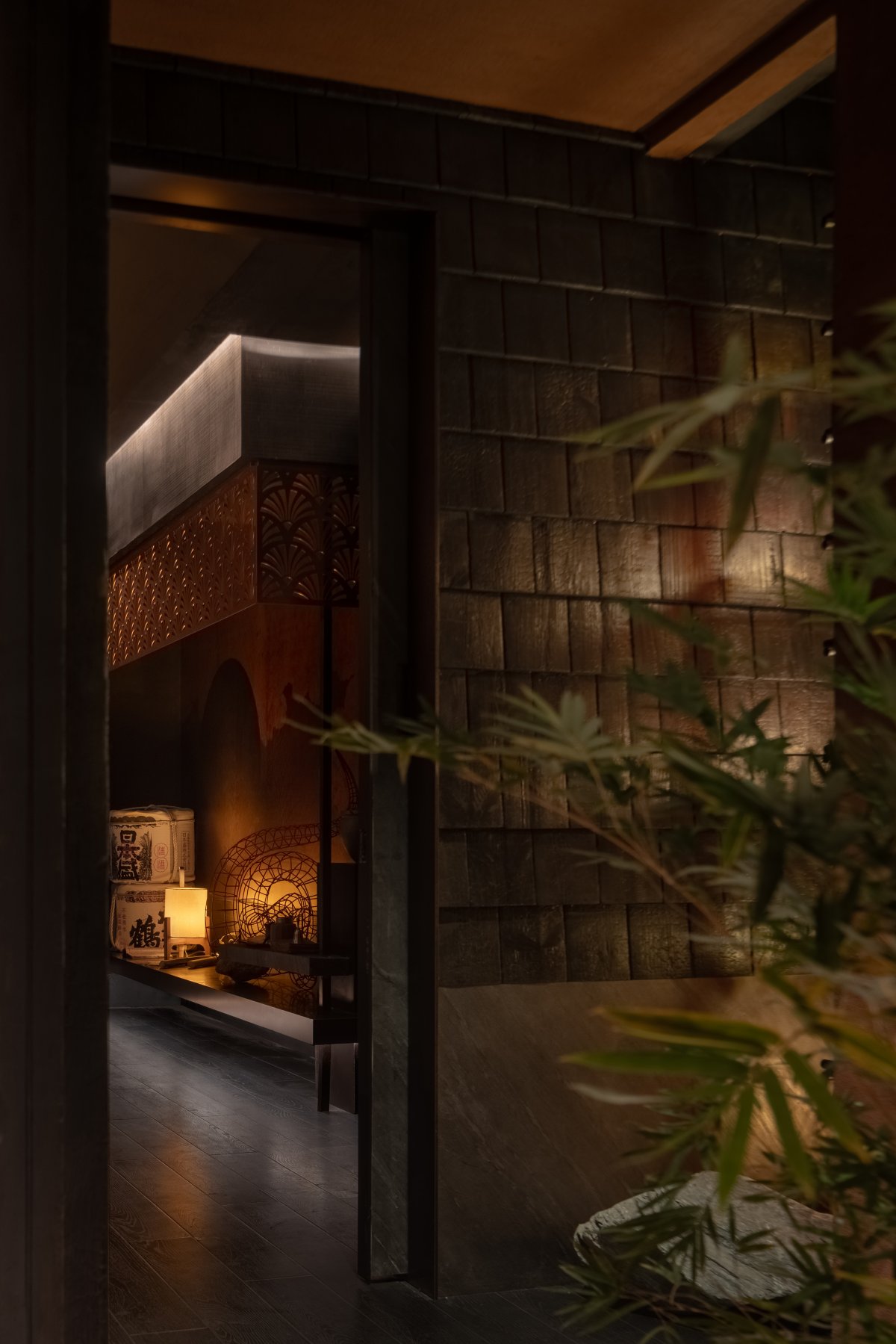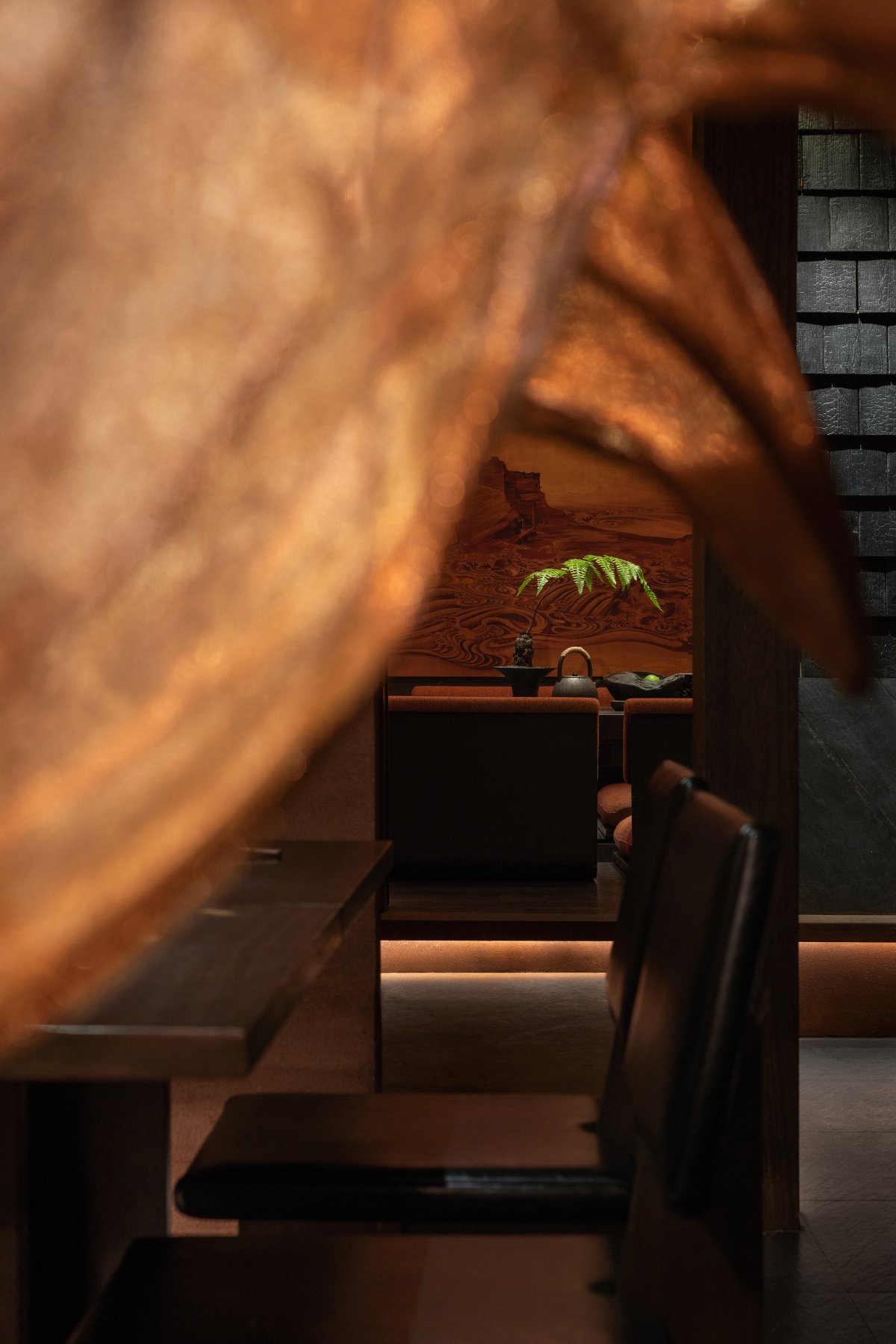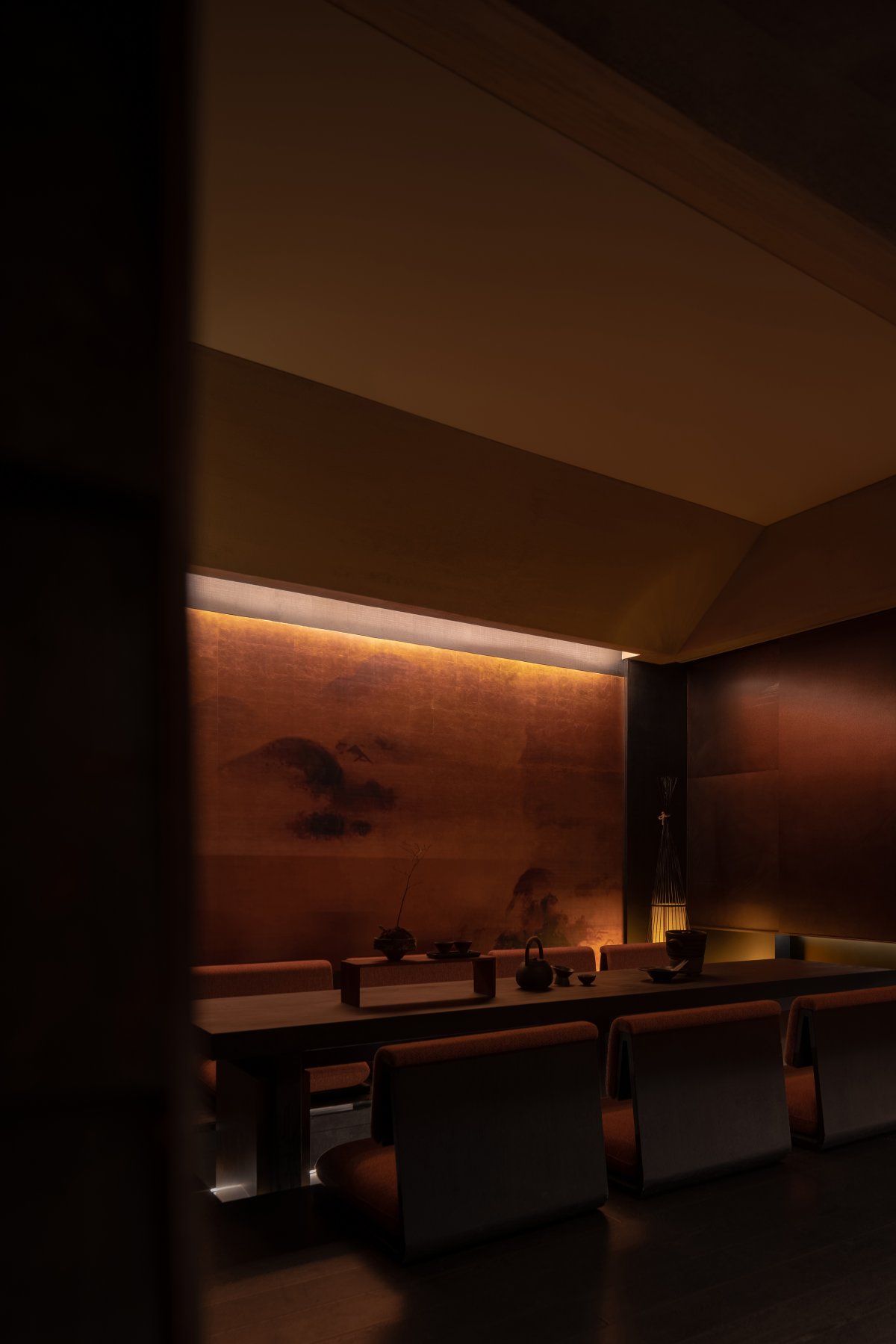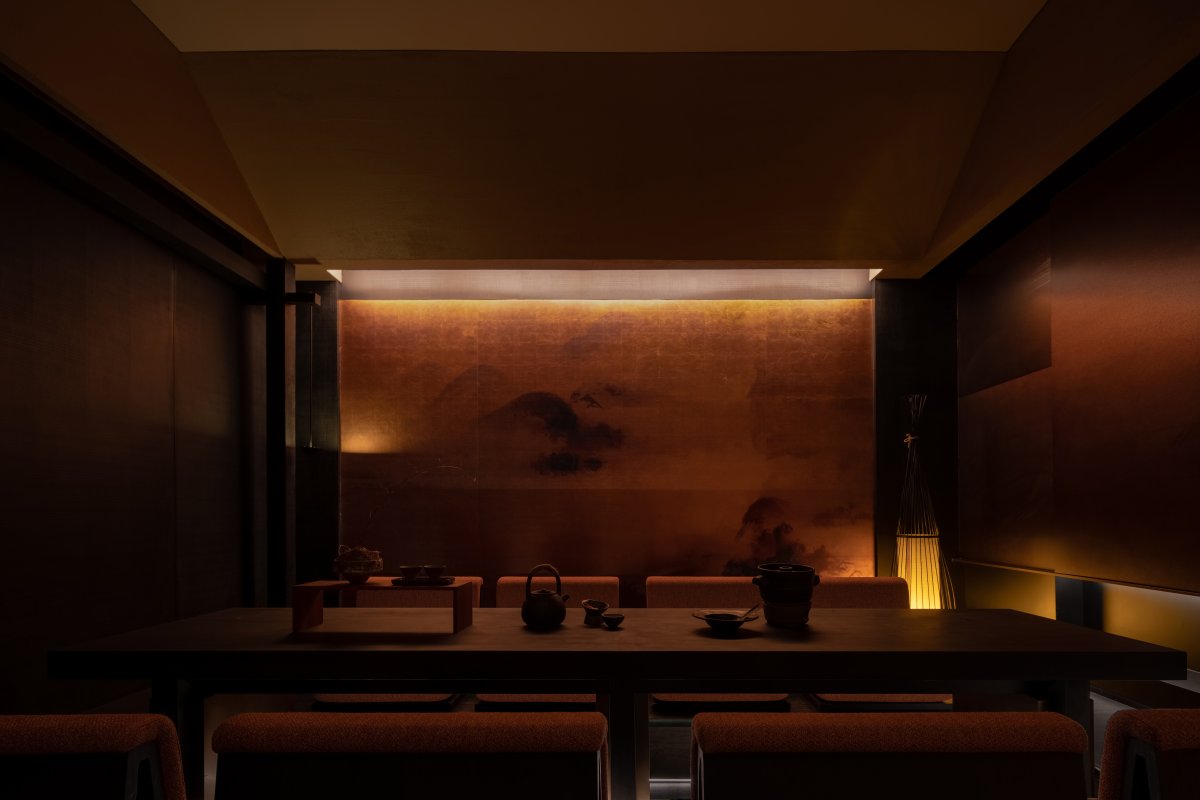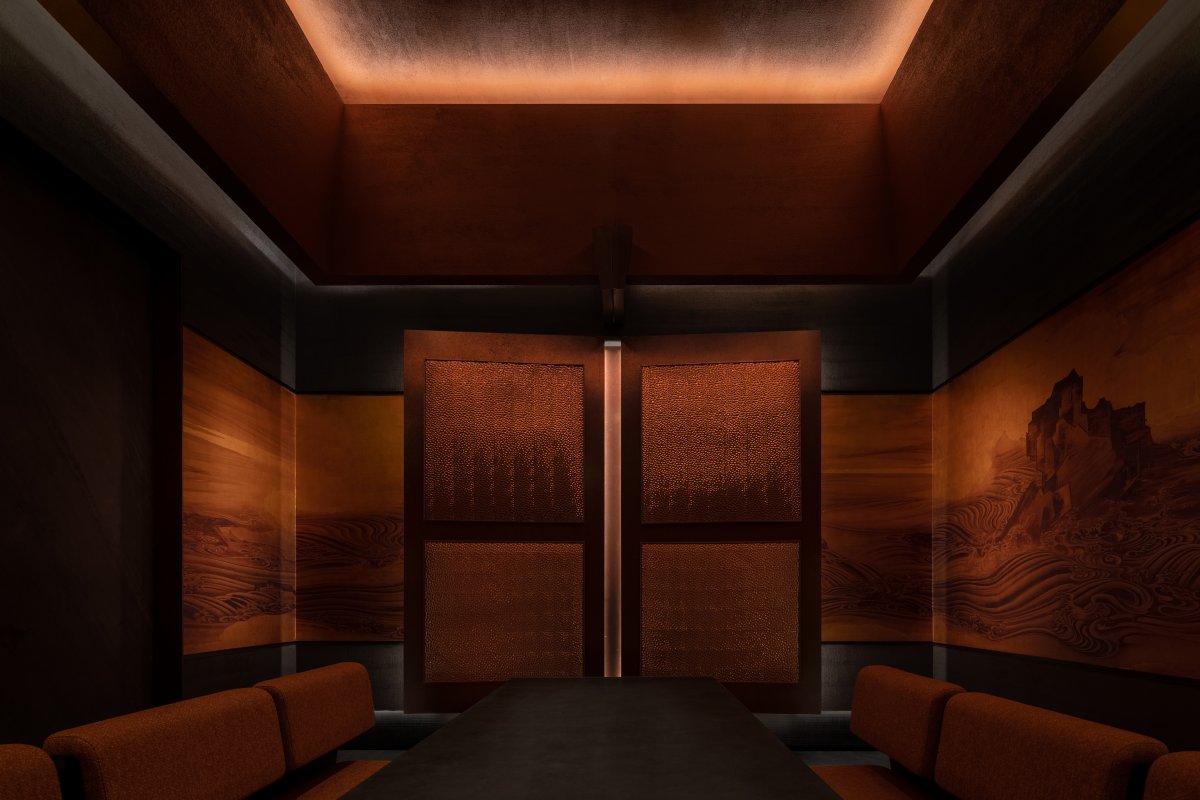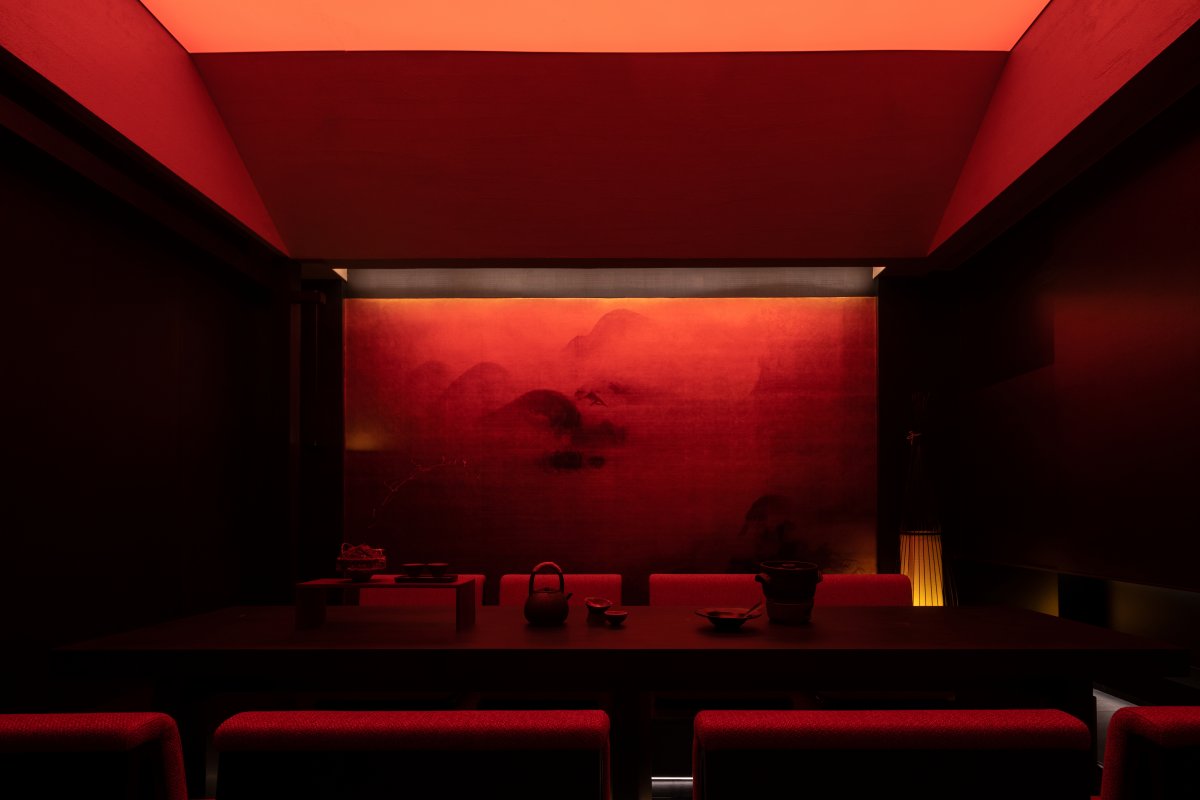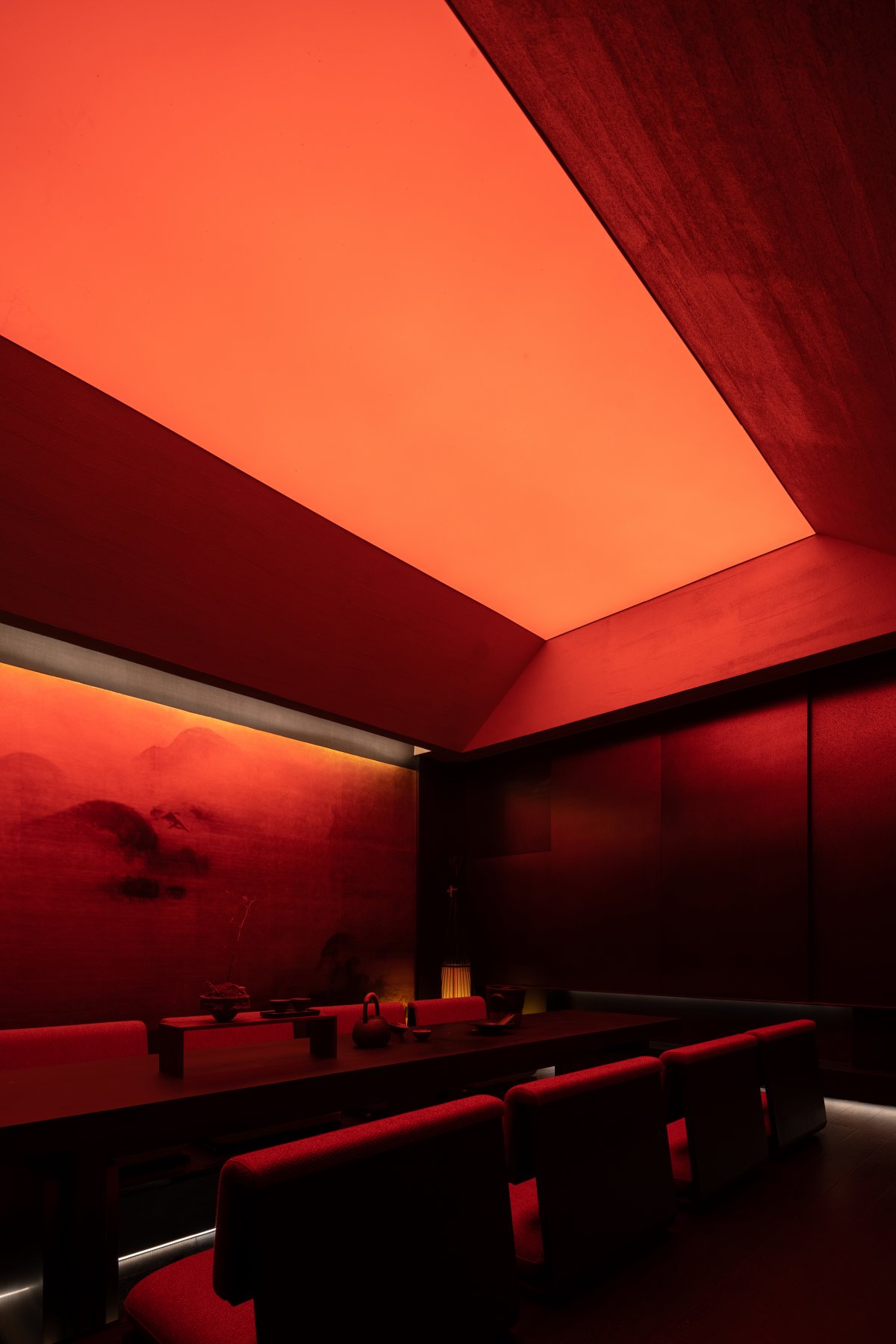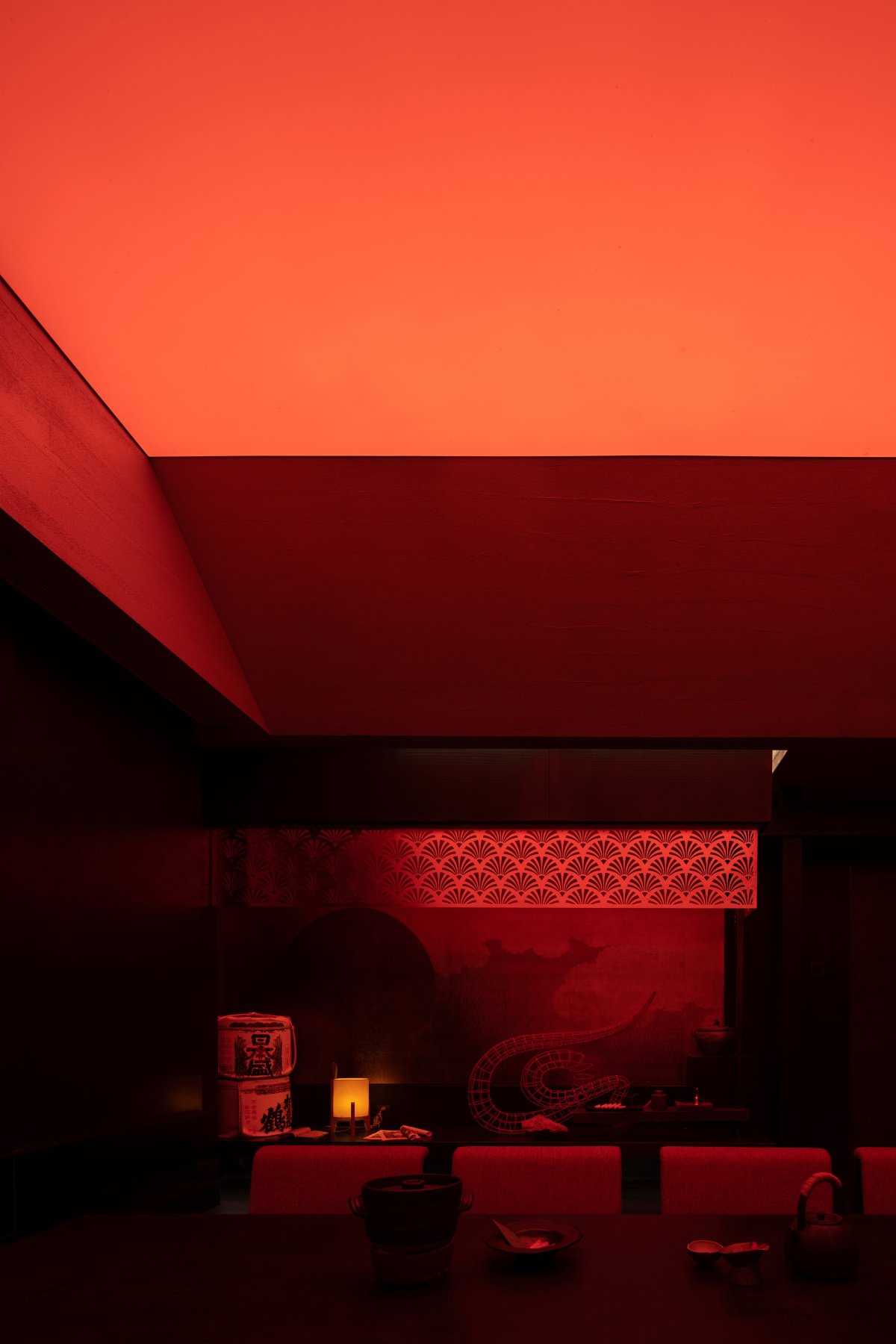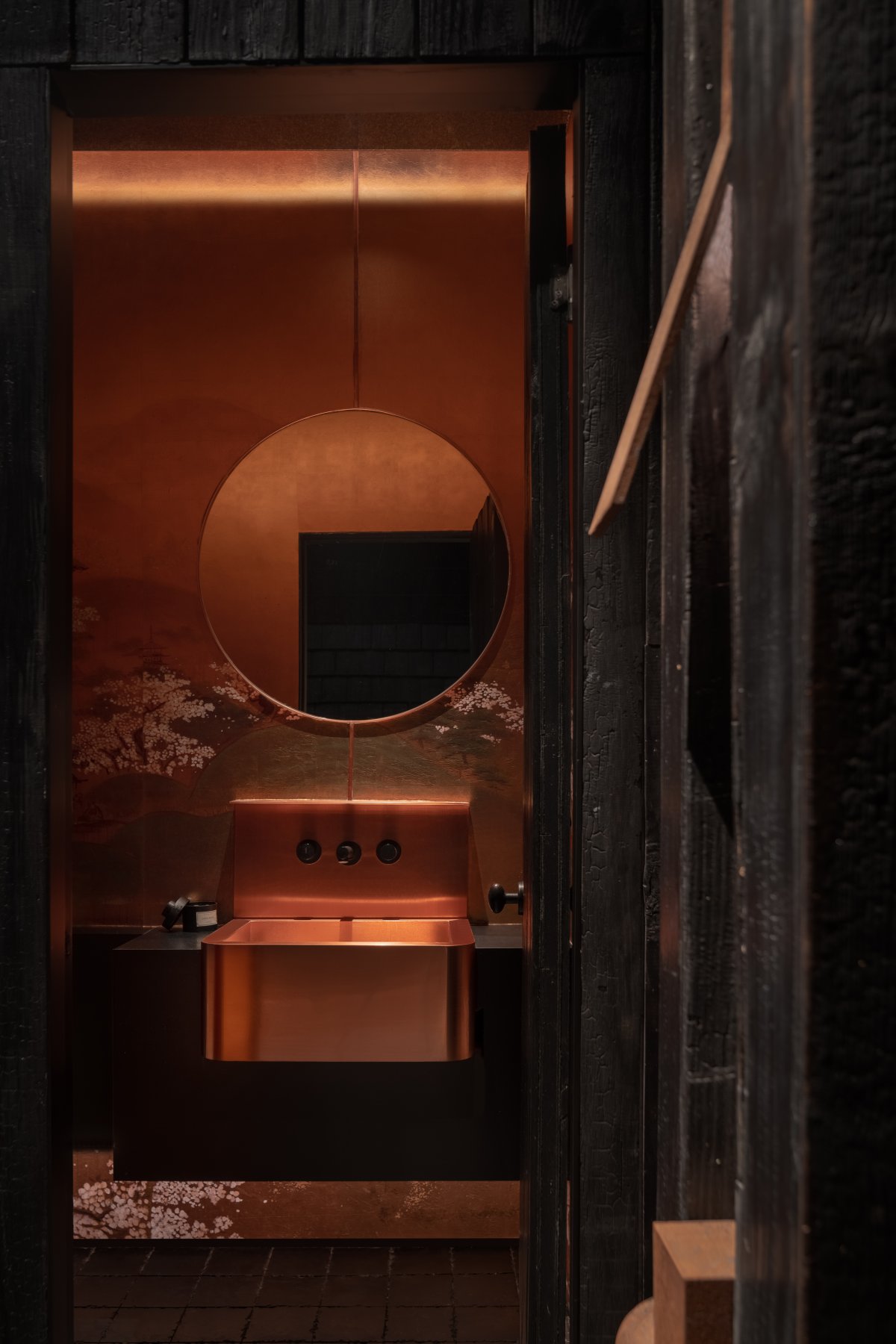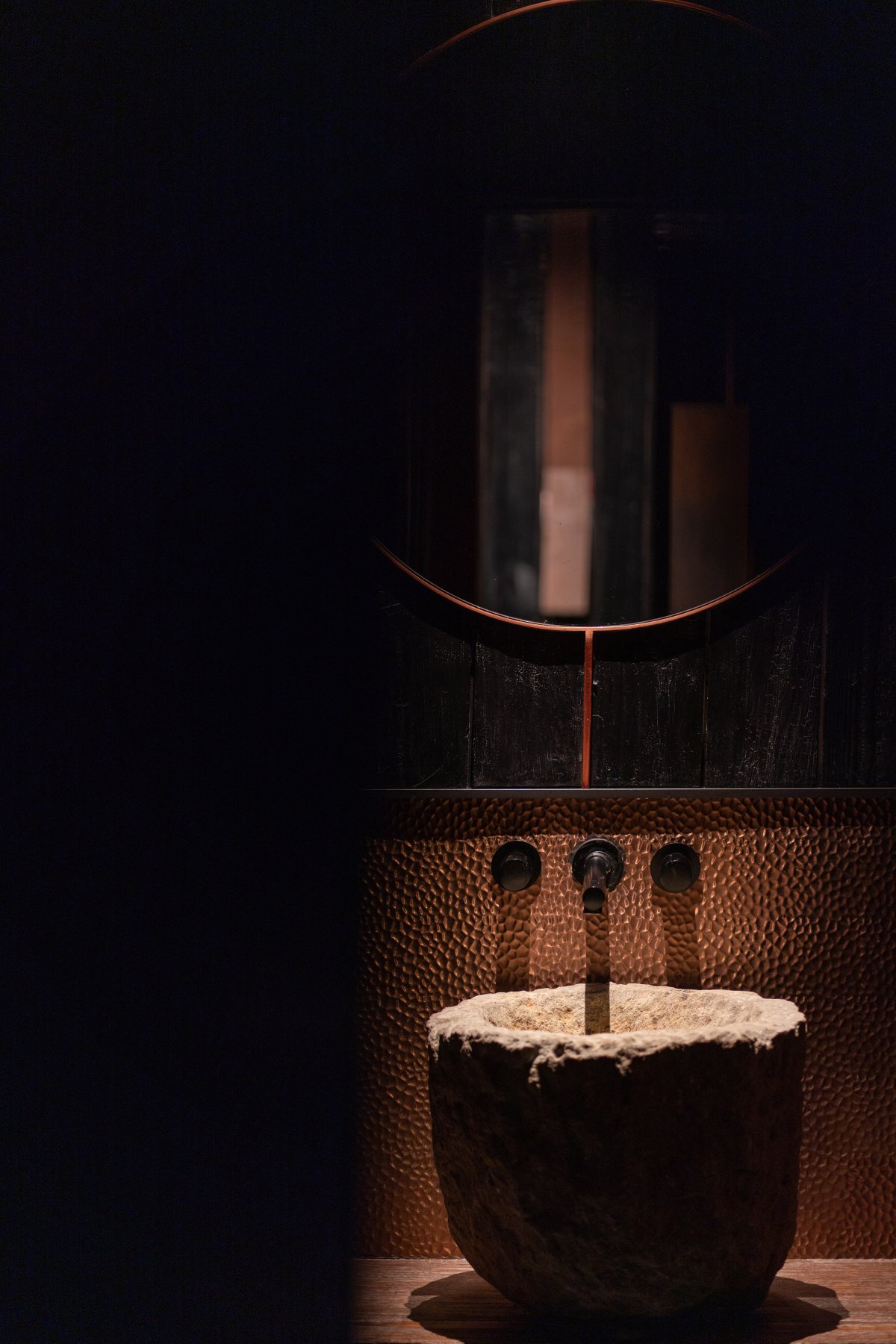
MINKA Yun Japanese Restaurant
No glorification of eternity, only the beauty of the fleeting moment.
In the Japanese cultural tradition, the term 'kachōfūgetsu' is not an actual reference, but a symbol of the beauty of nature in the interplay of the seasons. Due to its geography, Japan's climate is exceptionally well-defined, with mountains, rivers and plants taking on a rich variety of forms as the seasons change. Similar to the flexible circular path, the flowing linear time is defined by another form, a single dynamic transformed into a yearly cycle with the essence of life, showing slices of time.
Flower: Facade streetscape / Painting the street scene begins inside
As the Tang style moved eastwards, Japanese shops in the neighbourhoods not only decorated their facades, but also hung flags, mantles and pennants to help them operate, which was a way of attracting customers and creating a lively and smoky everyday streetscape. In the conception of the facade of MINKA, the different interfaces in the commercial environment are highlighted by the way the interior façade is exteriorised to simulate the real streetscape, based on the path of the customer, from the exterior to the courtyard and the corridor.
Exorcise evil spirits, is the ancient god beast. The head, the horse body, the legs, its makeup like a lion, gray hair, good flying. It has the function of repelling the epidemic and swallowing all things without diarrhea, which means that it gathers wealth and benefits.
Based on the irregular façade openings, the main entrance is entered from one side of the building, curving through the undulating facade, symbolising the mountainous landscape, and turning into the semi-outdoor courtyard seating area. Complementing and extending the internal functions, the rectangular spatial structure is constructed in the form of concealment and revealment, hiding and penetration, in the overall darkness of the sequence, the hazy mood of the translucent jade lamps adds to the depth of simplicity, simplicity and silence.
Bird: Centrality of column / The main character symbol of the center column
As early as the Five Dynasties, the turpentine lantern, made of a square frame of bamboo gabions glued to paper, was called the Kongming lantern by the Chuan people and the sky lantern by the Japanese, and has since evolved into an important vehicle for praying and wishing for good fortune during festivals. The established cultural elements are captured in the design and their conventional volumes are amplified to form the massive structural form of the inner courtyard seating area. The internal cross skeleton is transformed into a column that assumes a visually balanced relationship and symbolic meaning, reflecting centripetal force and gathering popularity.
In order to ensure the integrity of the ceiling, the mood lighting corresponding to the table tops of the seating area extends from the facade, addressing the need for light during dining and bringing to light the regional character of the lantern imagery. A half-height installation of booths is created by combining columns in the same way as timber framing in ancient architecture, with the orderly rhythm of height and rhythm, and the randomness of a variety of objects, conveying the everyday joy of a mundane life.
Wind: Barn imagery / Because sentimentally attached, and the heart gives birth to nostalgia
Barn architecture is a historical social artefact that has gradually fallen out of sight as the times have progressed. The exposed structural features of the space, which was then built solely for its function, naturally form a nostalgic symbol due to its close association with food. Order is created, and the rhythmic ceiling sequences in the card-stand area in front of the panels recreate scenes from a bygone era and serve as a grand ritual language for the main access area.
It is recorded in the Book of Fantastic Creatures of the Mountains and Seas that a divine animal lives in the Tianshan Mountains of the Yangtze River. Its makeup is as yellow as a bag, and its red as Danshui. It has six legs and four wings, and it has no face. Its figure appears, are the place of warm pleasure.
Primary and secondary relationships are subordinated and expressed. Complexly constructed forms stand out in a simple natural texture, rendered by point light sources, so that contours, lines and textures then become visible. The flexible positioning of the different businesses gives the space a diverse commercial identity.
Moon: The Setting Sun / Time dizzy dyed the profound meaning of the still
Masayuki Kurokawa says that the view of the space in a Japanese tea room is usually from near to far, from the main space to the floor, then to the courtyard and the distant mountains, and so on. For inward-facing spaces, the combination of solid and void walls, with properly spaced joints, allows for the extension of the view. The facade of うきよえ Ukiyo-e is slowly spread out from the images, and the landscape in front of us creates a profound natural mood.
The pursuit of material permanence alone is fleeting, but the pursuit of spiritual permanence is eternal. The use of different cooking methods and decorative plating in response to the changing seasons of the year is a key feature of Japanese cuisine that inspires the five senses. Seasonal renewal and spiritual timelessness are seemingly at odds with each other, but they are so complementary that they are inseparable. As an important part of the cultural heritage of the heart, the common "kachōfūgetsu" form the core of Japanese culture.
- Interiors: RESOLUTE
- Photos: Vincent Wu
- Words: Off-Words / Moon

